The travel team of Eat Dessert First Greece with a new lineup for a trip to Distomo and Arachova. Giorgos with his mom and Eliza with her dad got their exploratory mood and got on for another trip that would have it all!
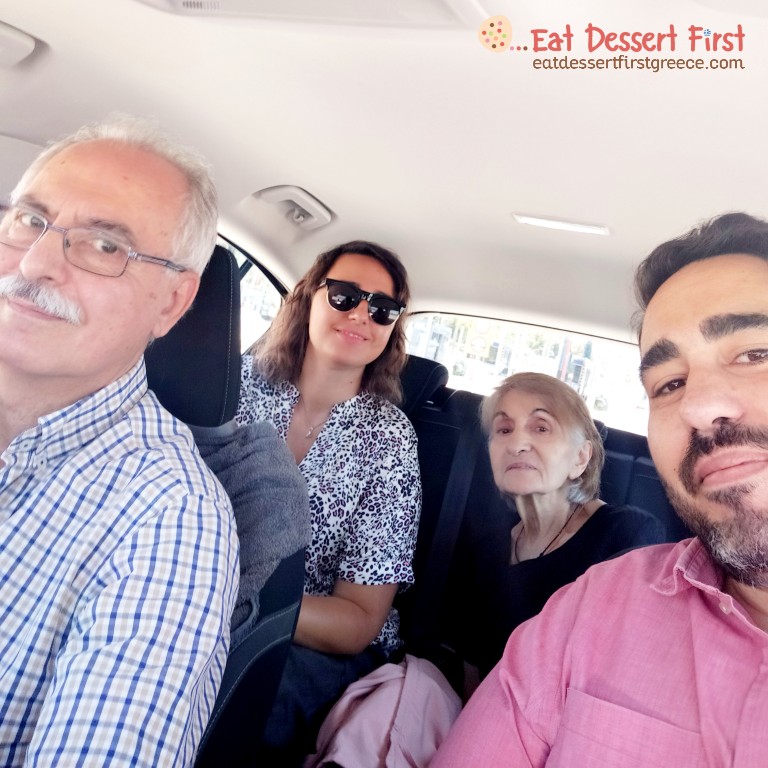
In our new travel article, the destination is the martyric Distomo and the picturesque Arachova. There, we learn history from the monuments of Distomo, we visit the historic, recognized by UNESCO Holy Monastery of Osios Loukas, we take walks and try the cuisine of Arachova, without forgeting of our dessert of course! A day trip full of knowledge, experiences and flavors…
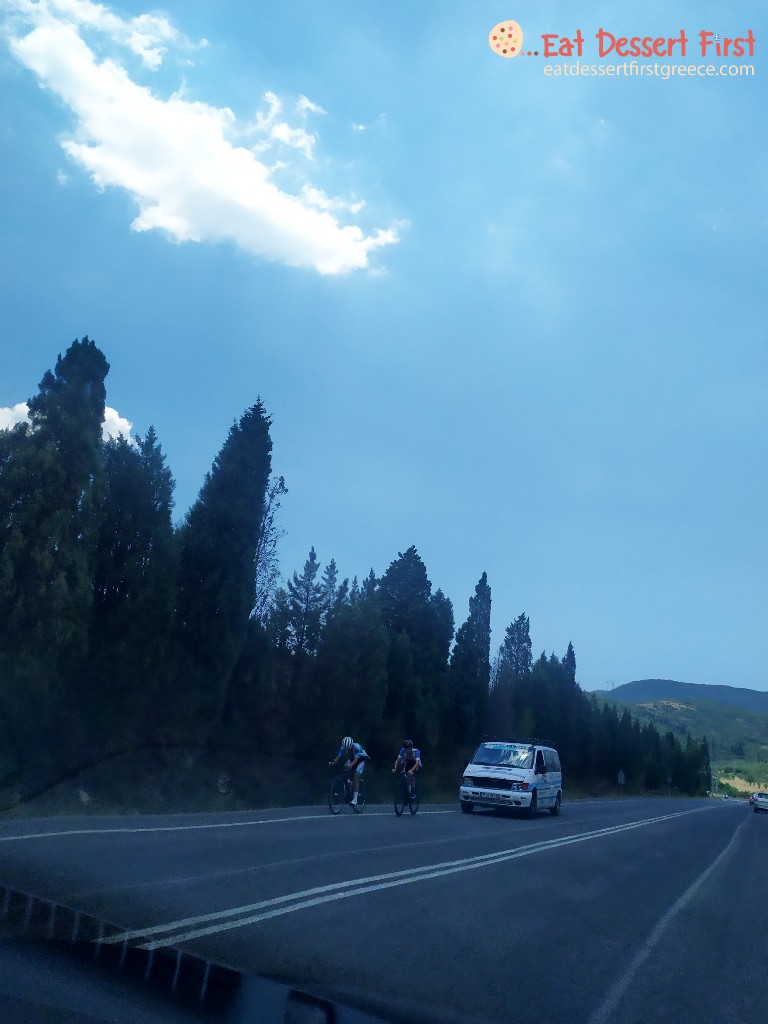
Our first destination was Distomo, a semi-mountainous town -at an altitude of 467 m- in the province of Livadia in the prefecture of Viotia. Since 2010 it is the seat of the municipality of Distomo-Arachova-Antikyra.
Distomo is unfortunately mainly known for its tragic fate in World War II. We are referring to the Distomo Massacre or Holocaust on June 10, 1944. As we read, until that day the inhabitants lived in an idyllic homeland, until everything changed on a Saturday morning. German soldiers entered the village and killed men, women and even children. In a report on German public television ARD, two German journalists, who spoke to the descendants of those executed, described it as “a barbaric, bloodthirsty act, unexplained even to this day.” You can read the chronicle of the tragedy in detail here.
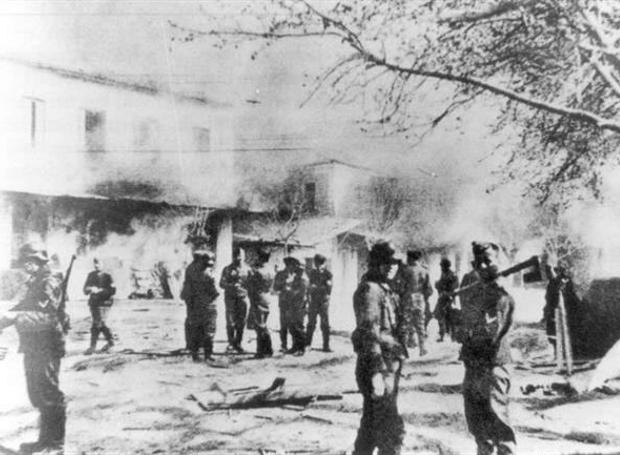

One of the worst atrocities of the whole war
Mark Mazower, historian (source)

Three monuments and a museum stand in the village to remind of its tragic history, for the young to learn and the old to remember, so that the mistakes of the past do not happen again, and the victims are not forgotten.
The first monument is found immediately at the entrance of the village. It is a 7-meter sculpture, which as we read is called “World Kiss”. It symbolizes the peace and friendship of the peoples and was erected in its place on the 62nd anniversary of the massacre of the 218 inhabitants of Distomo by the Nazi occupation troops. The abstract sculpture is the work of the sculptor and professor of NTUA Mr. Georgios Kalakallas. With great symbolic value, this work welcomes us to the martyric village and, for us, says that we must not forget, but we must move forward for a world peaceful for all.
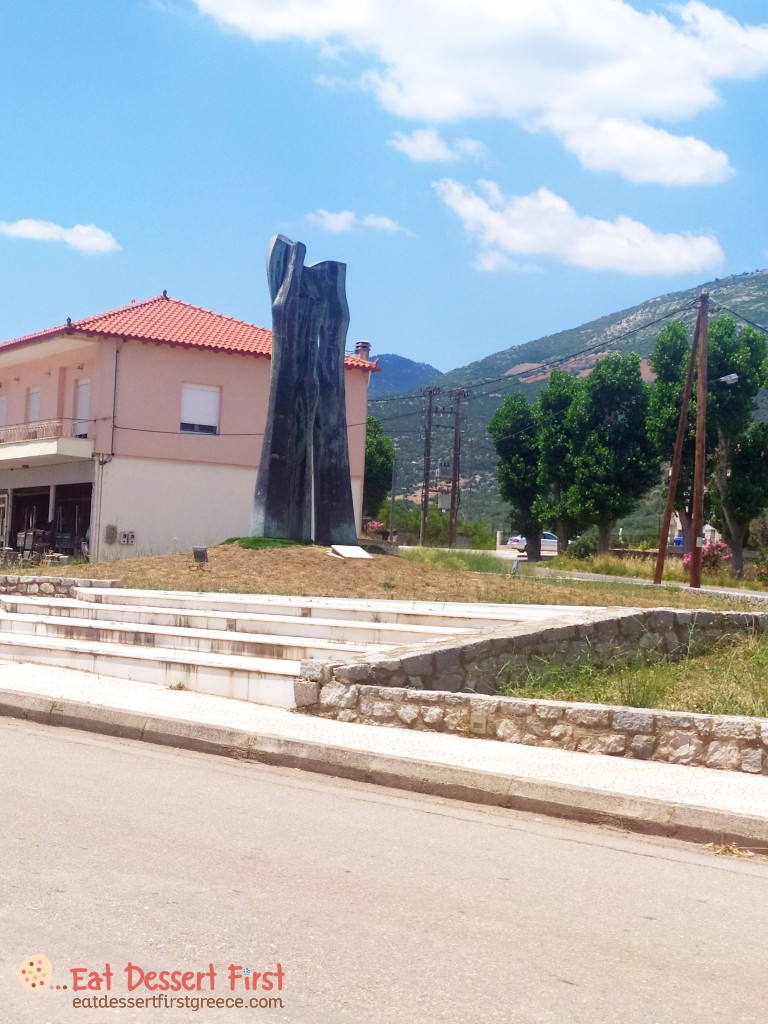

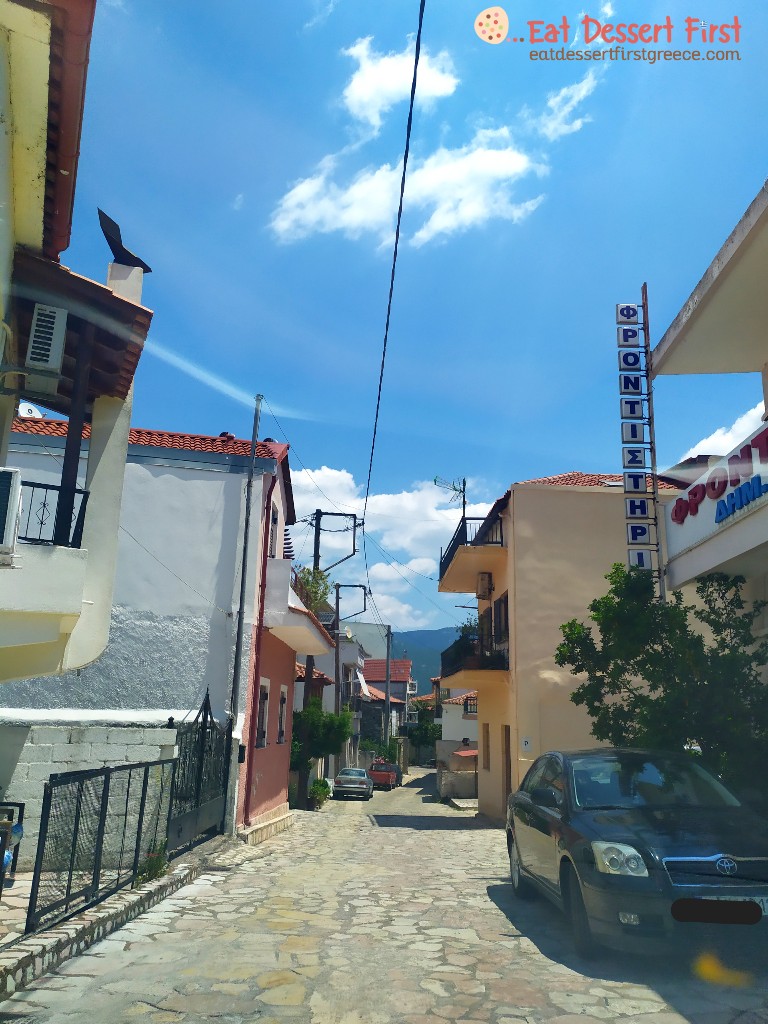


Following the sign for the Mausoleum we ended up perhaps at the highest point of the area, where a building of special architecture is built. The second monument we saw in front of us was a complex of rectangular volumes forming a monument-building, dedicated to the victims of the Nazi Germans. Looking for some information about this place, we read that it is located on the hill Kanales, at an altitude of 346 meters above Distomo.

Walking around the building, sometimes you are near its center and sometimes you are away from it. Approaching various places, its details are revealed: a wall with the names of the dead engraved on it, among which there are even infants, an elongated relief work of art with human figures, and the most shocking of all, in the main building if you look from the glass you see inside a wall full of the skulls of the victims.



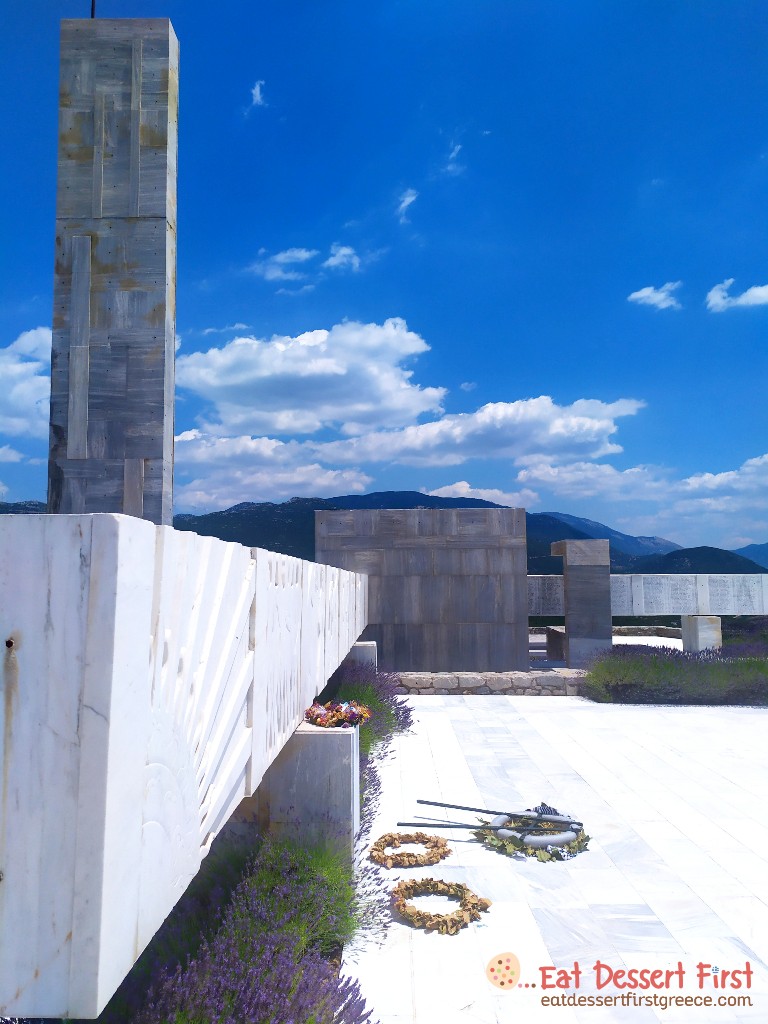

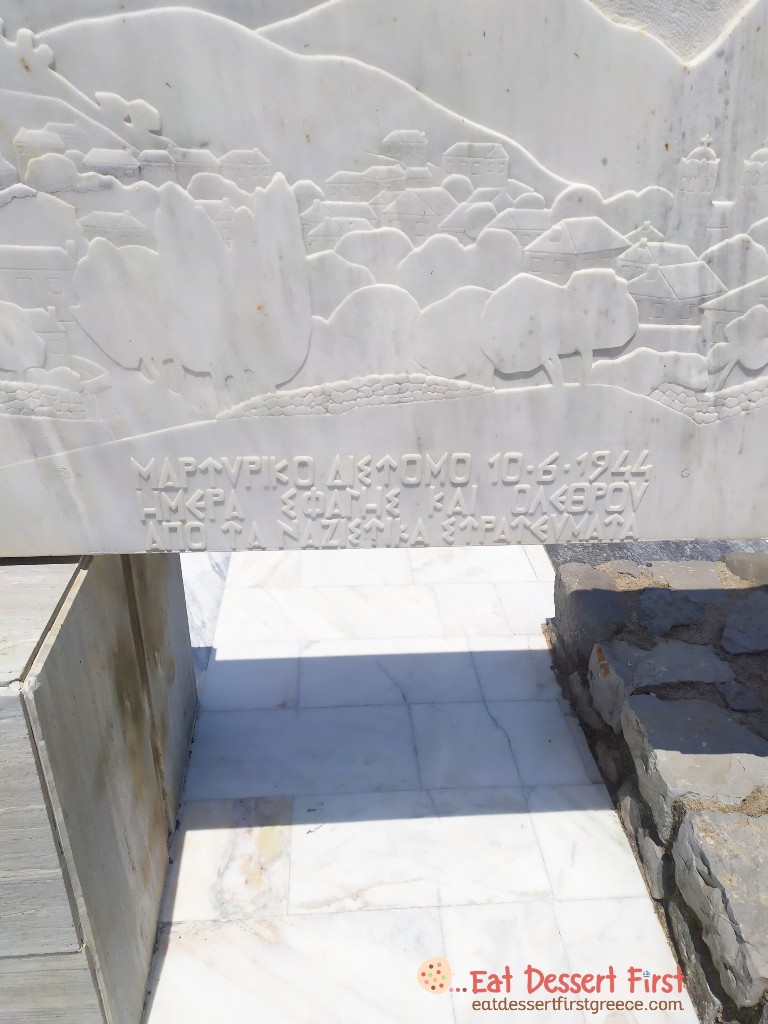
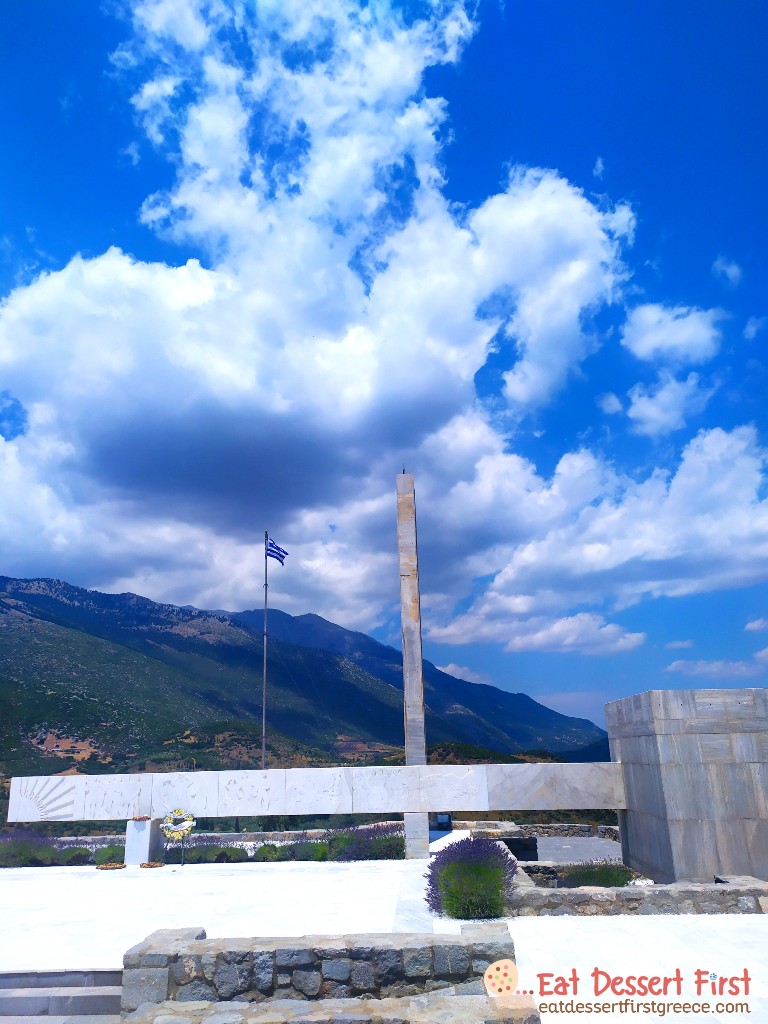

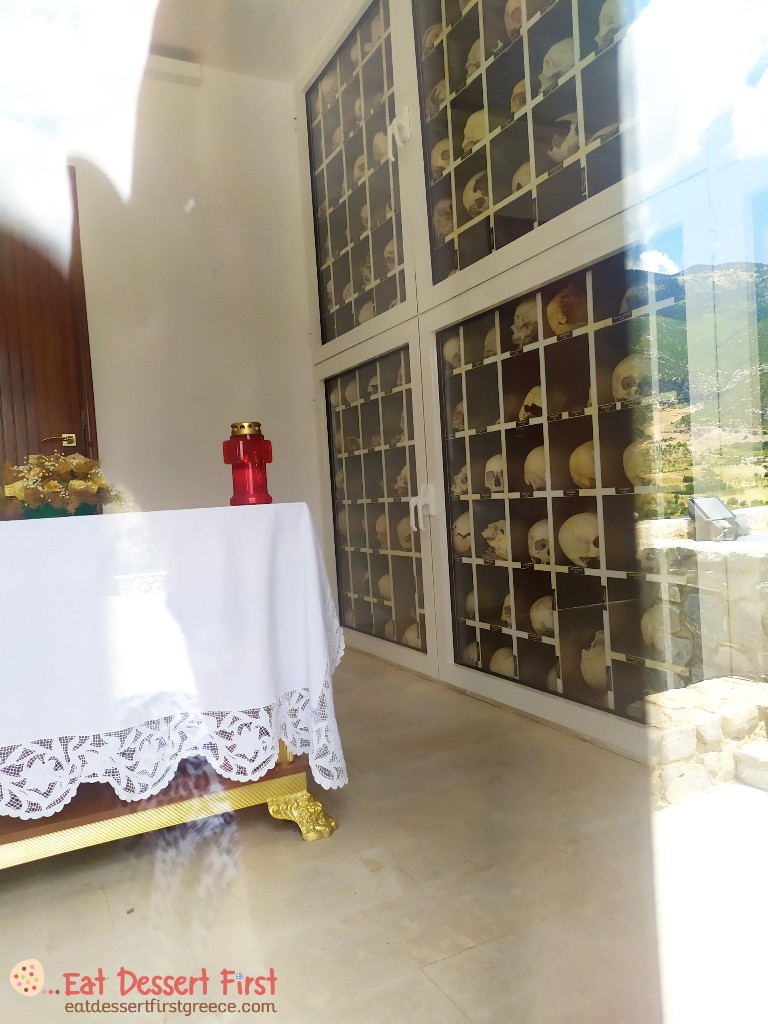
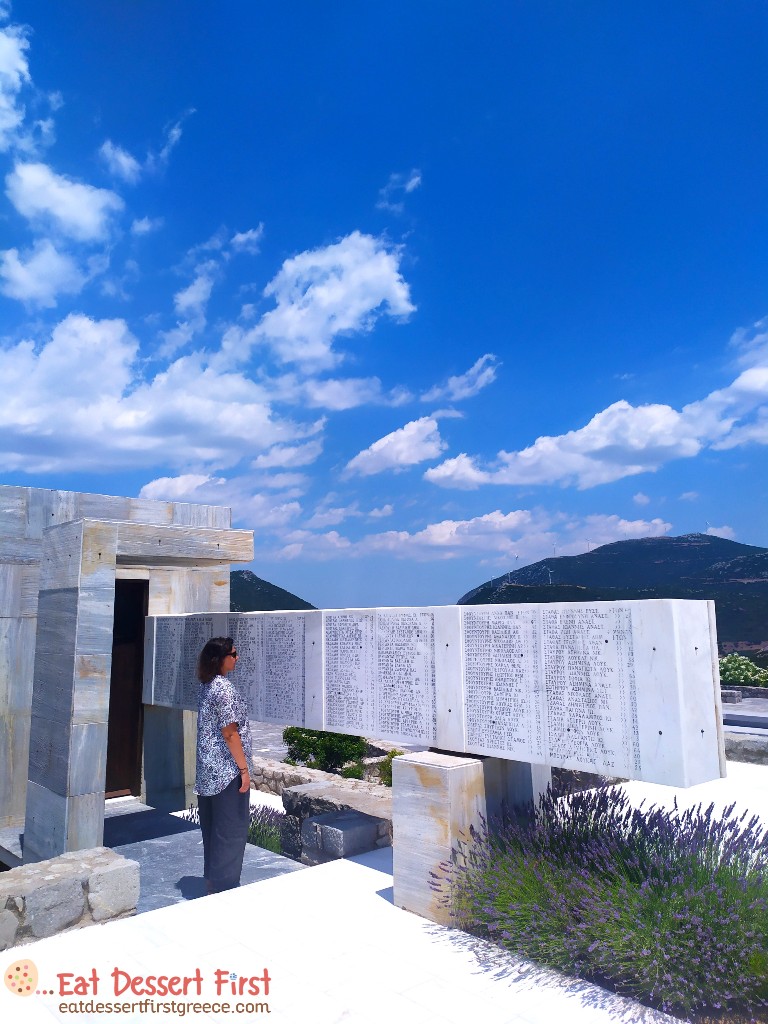
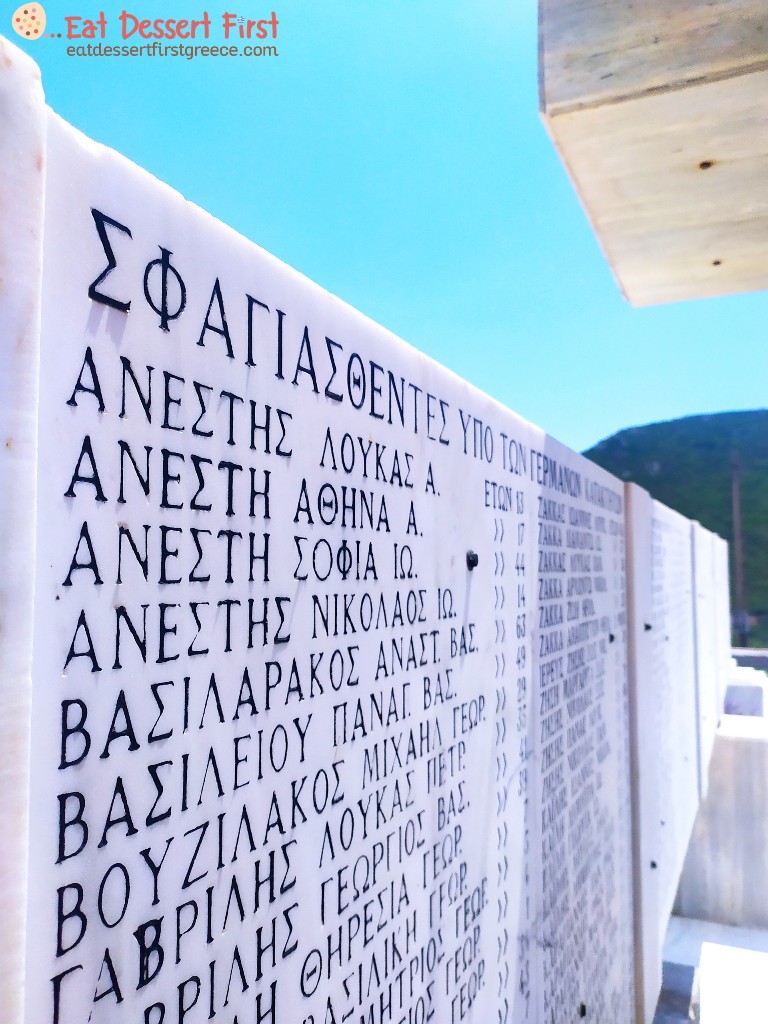
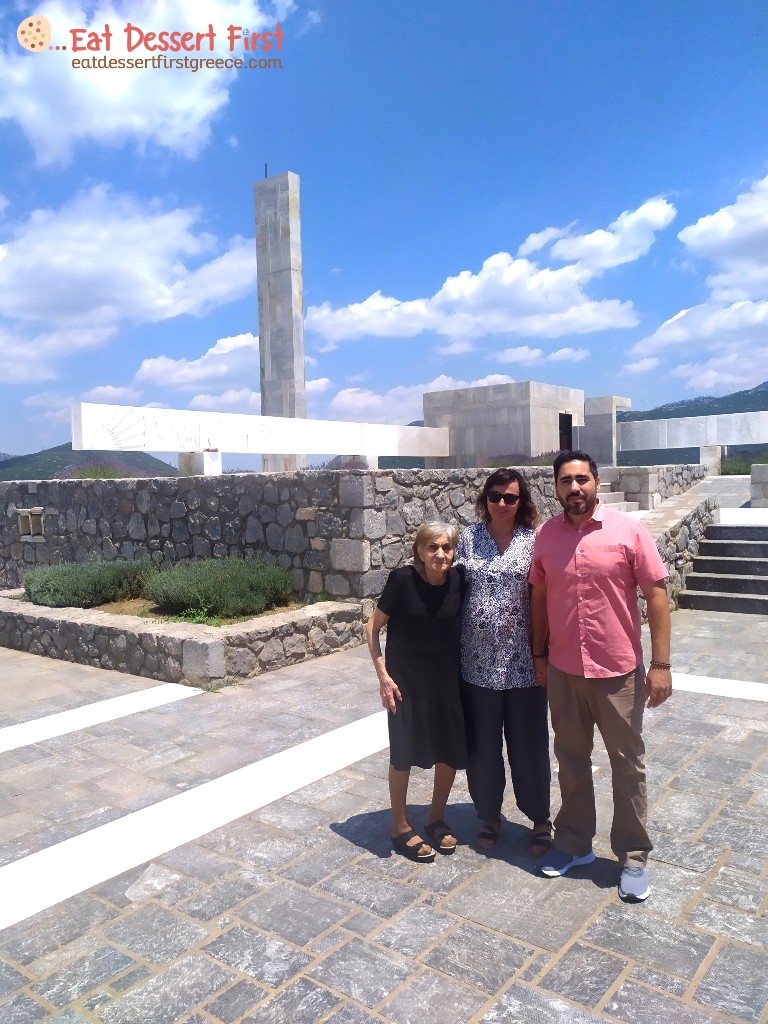
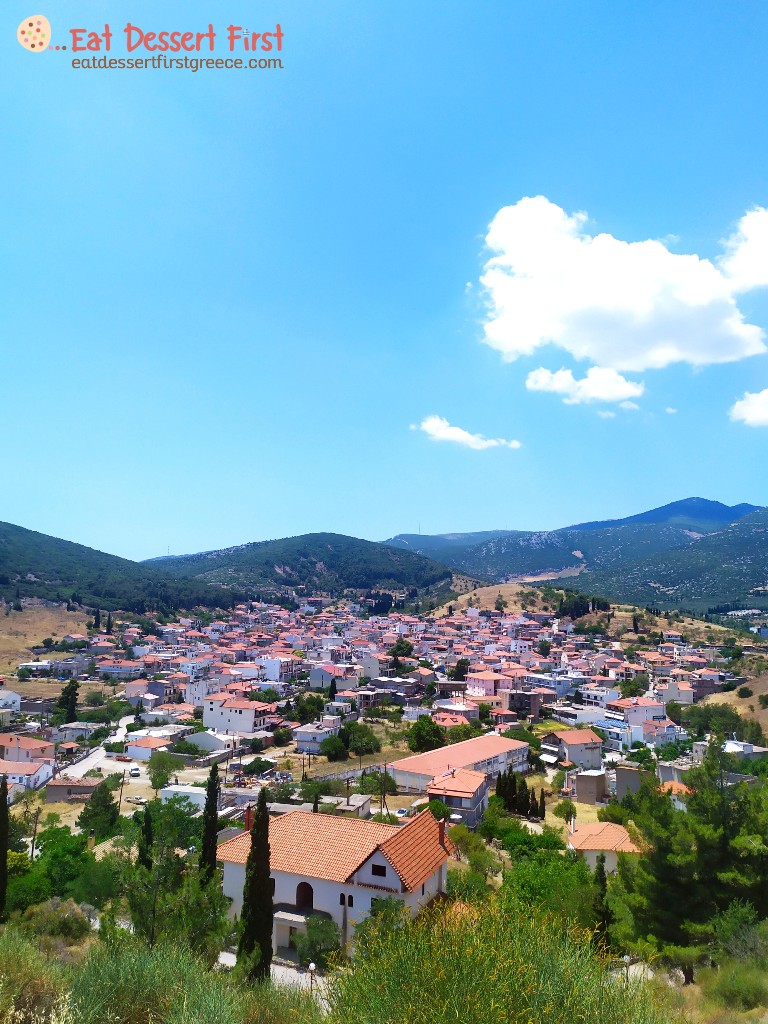
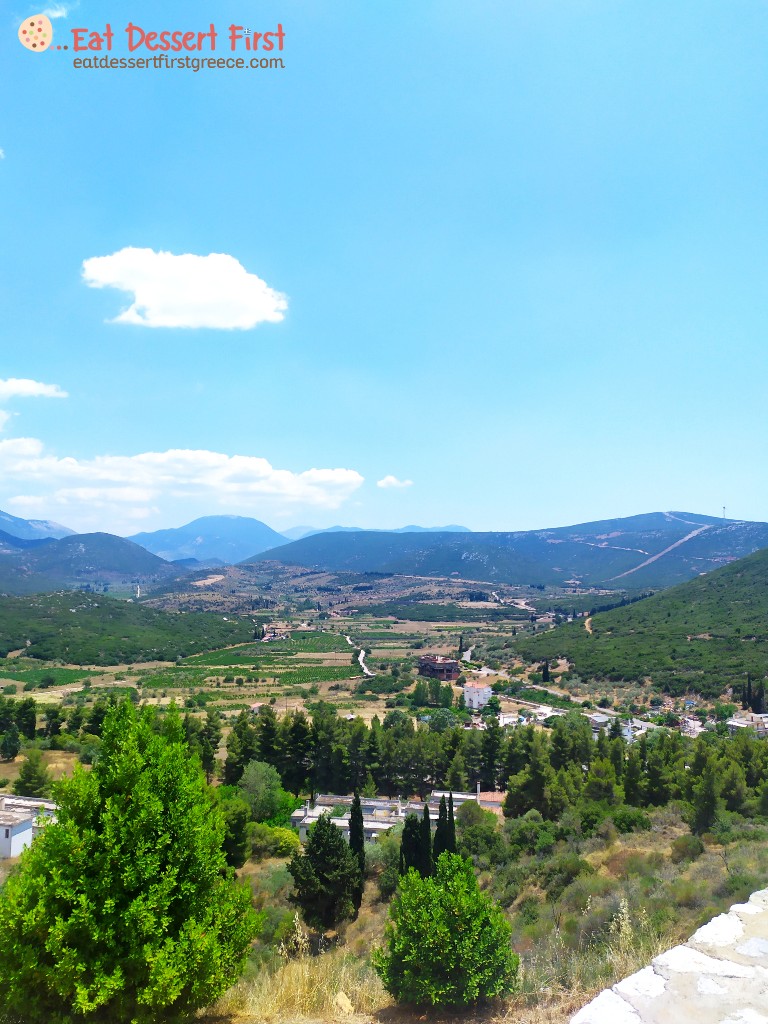
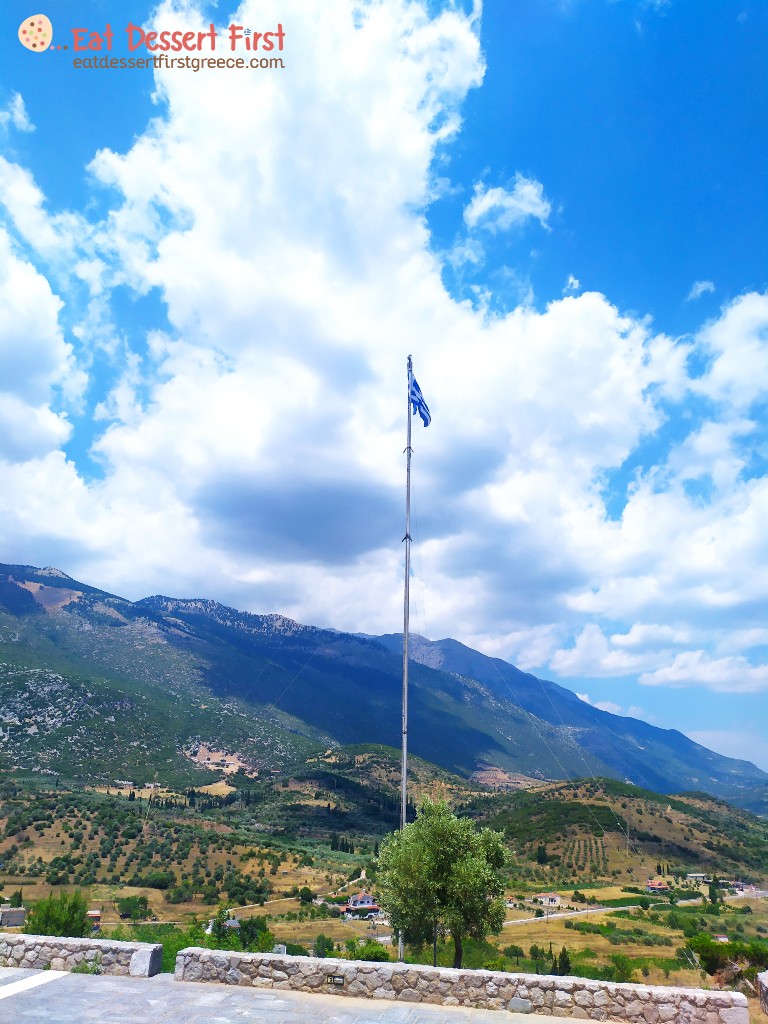
Excited by what we had felt in the Mausoleum, we headed to another landmark of the area which preserves the historical memory, the Museum of the Victims of Nazism, a stone building in Giannis Stamoulis Square. Unfortunately we found it closed, but we searched for information about it on the internet.
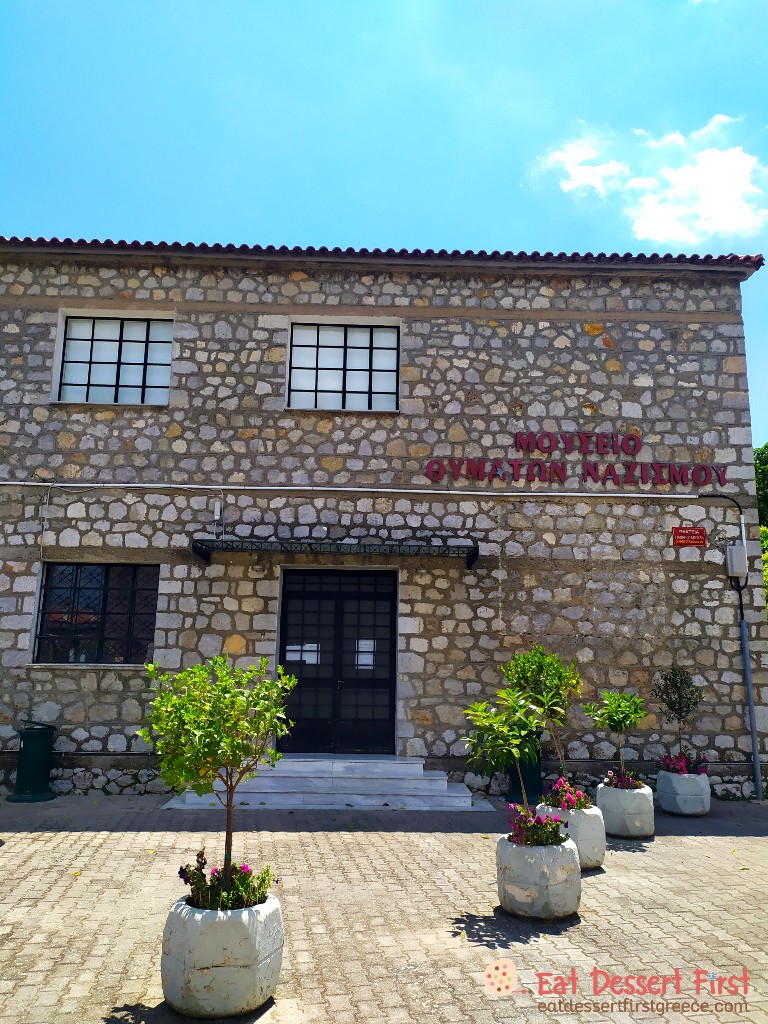
From the museum’s Facebook page we learned that it was founded in 2005 by the Municipality of Distomo. Its purpose is “the acquisition, acceptance, safekeeping, preservation, recording, documentation, research, study and interpretation, as well as the exhibition and display to the public of historical testimonies, material and immaterial, which report and document the historical event of the massacre of the inhabitants of Distomo from the German occupation troops on June 10, 1944, but also during the general period of the Occupation in the prefectures of Viotia and Fokida”.
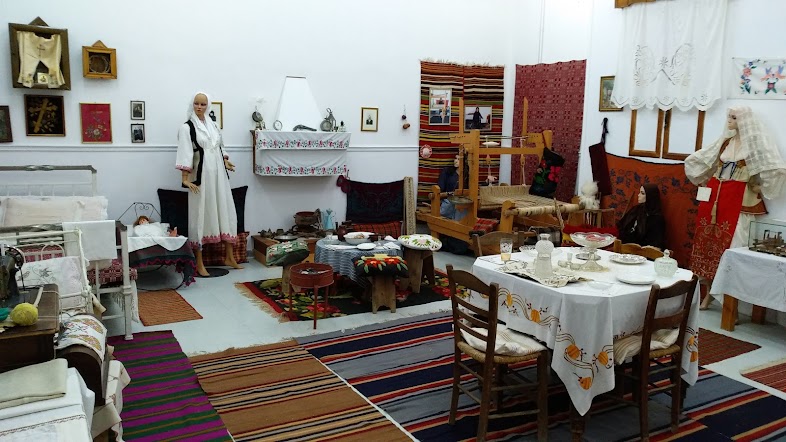


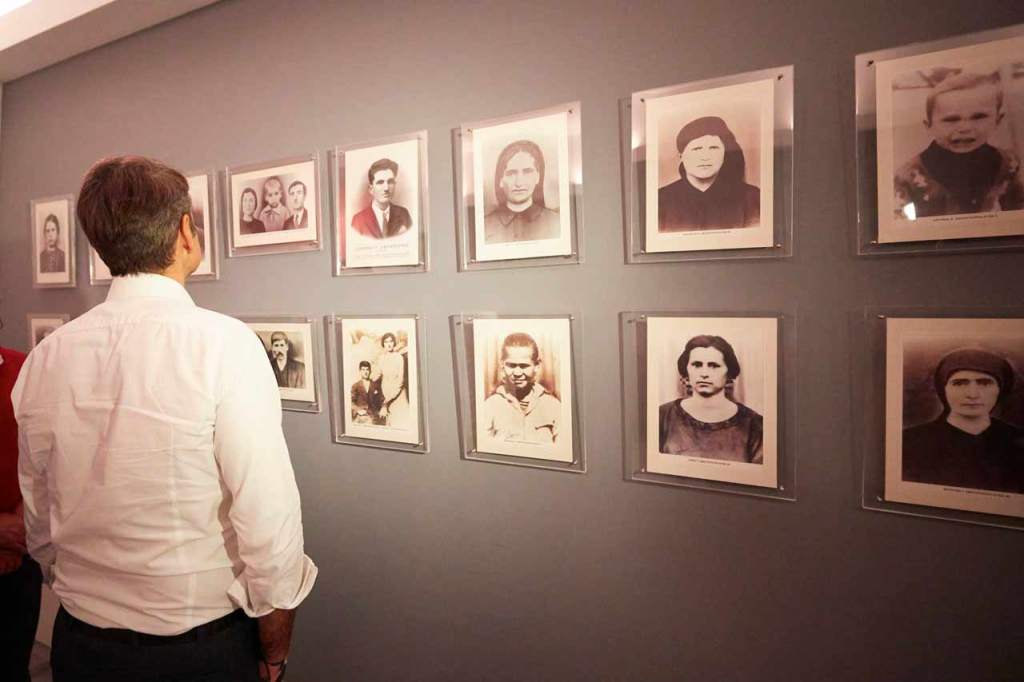

Leaving Distomo, we also came by its City Hall, which also had a work of art with a similar theme in its main facade. Throughout the settlement there are things reminiscent of its tragic history…
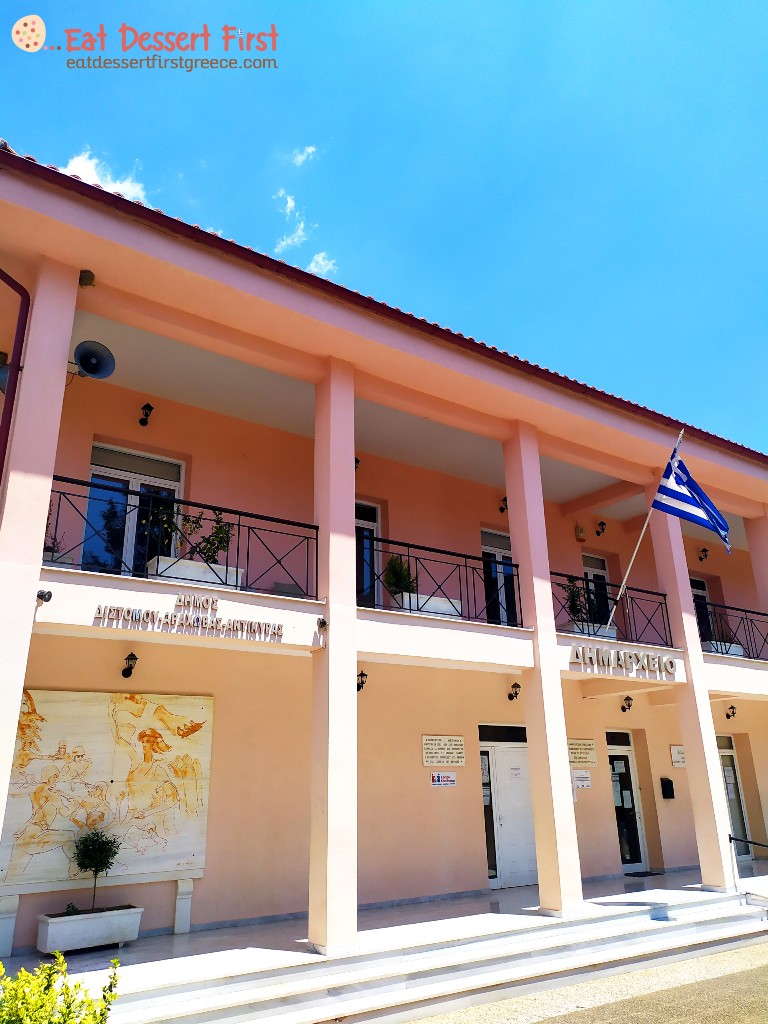
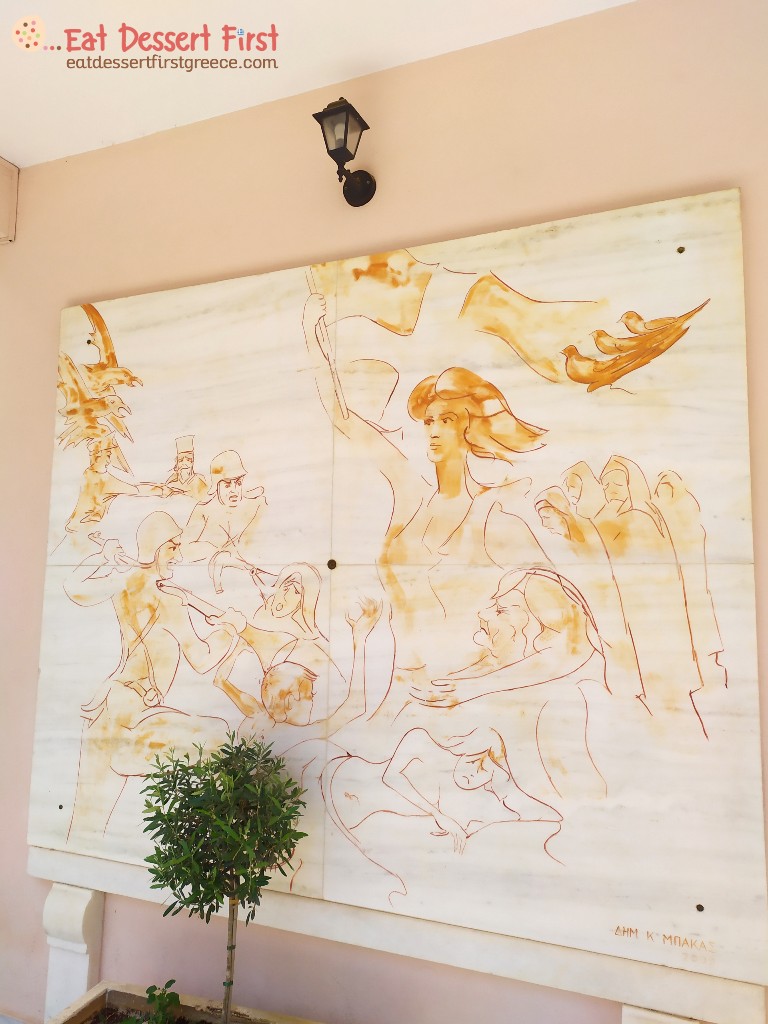

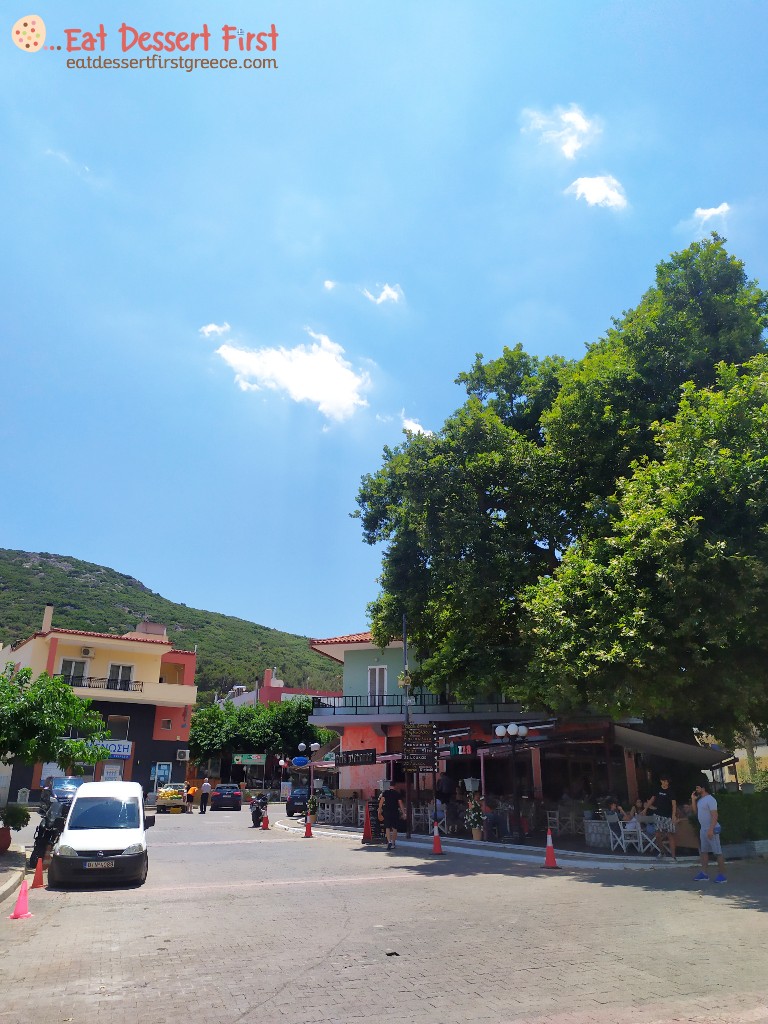
Nearby from Distomo we had seen the Monastery of Osios Loukas. This was our next destination. Arriving we saw a magnificent, serene landscape with beautiful, Byzantine buildings, and so we knew we had made the right choice to get over the bloody past of Distomo that moved us deeply.
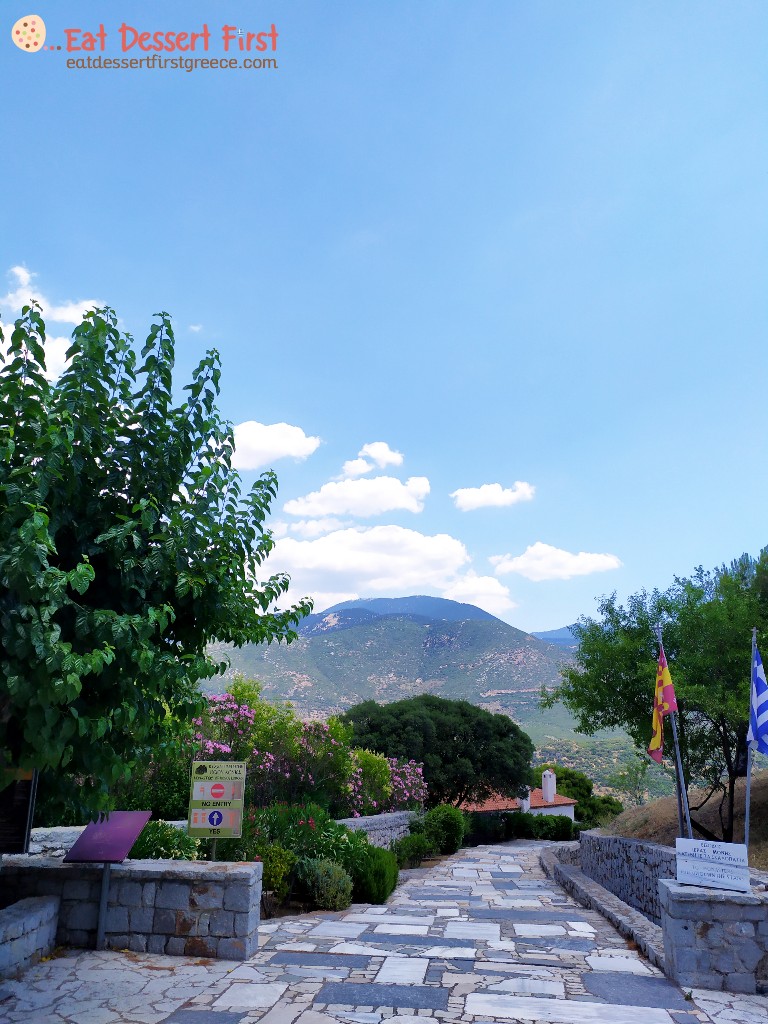
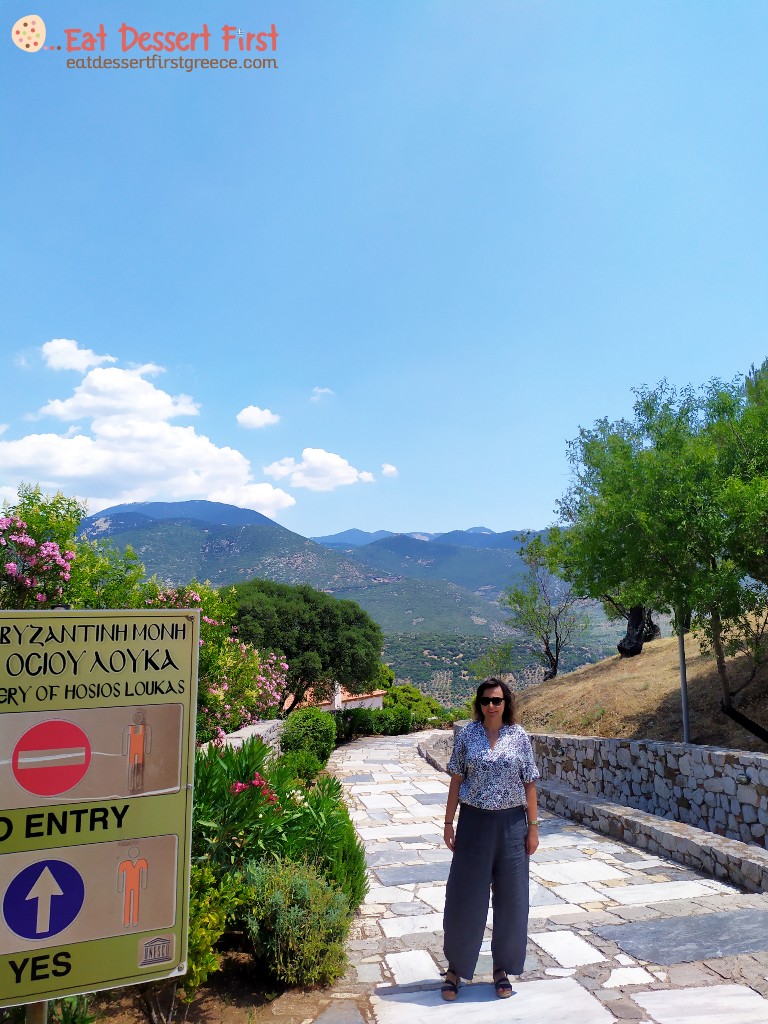
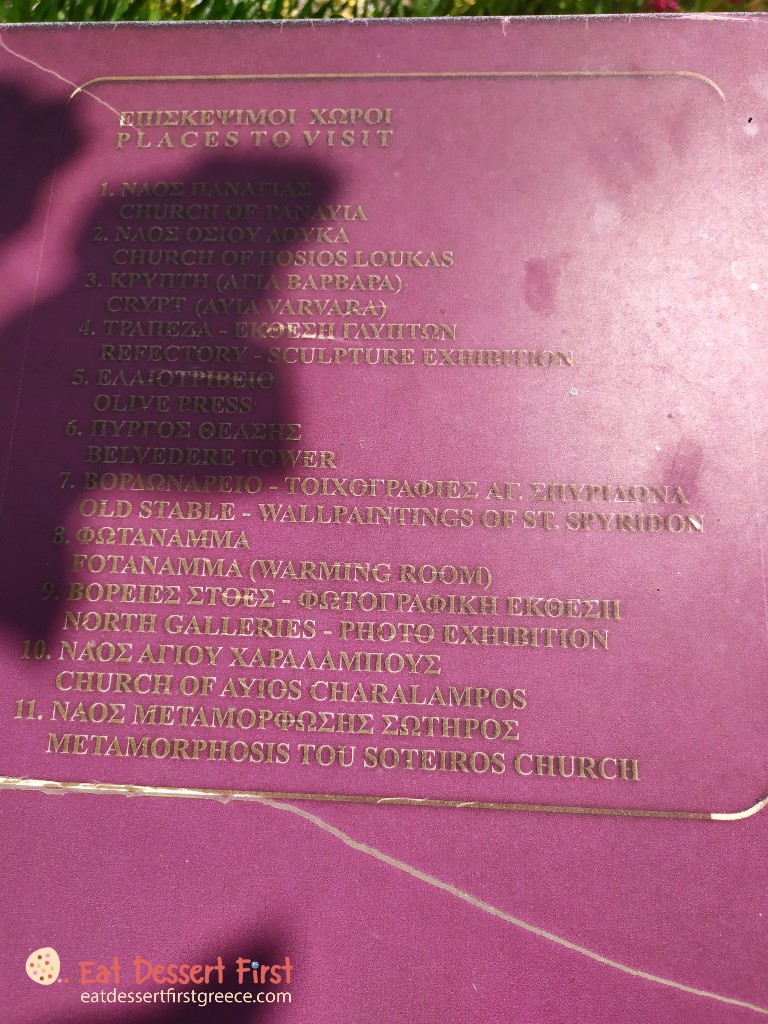
The Monastery of Osios Loukas has a beautiful view of the surrounding mountains. Outside the complex of the monastery there are tall, shady trees and seats that invite visitors to enjoy the tranquility of the landscape.
The Monastery of Osios Loukas was inscribed in the UNESCO World Heritage List in 1990, as it is an excellent example of a monastery complex with a thousand years of history and universal value, which needs protection for the benefit of all mankind.
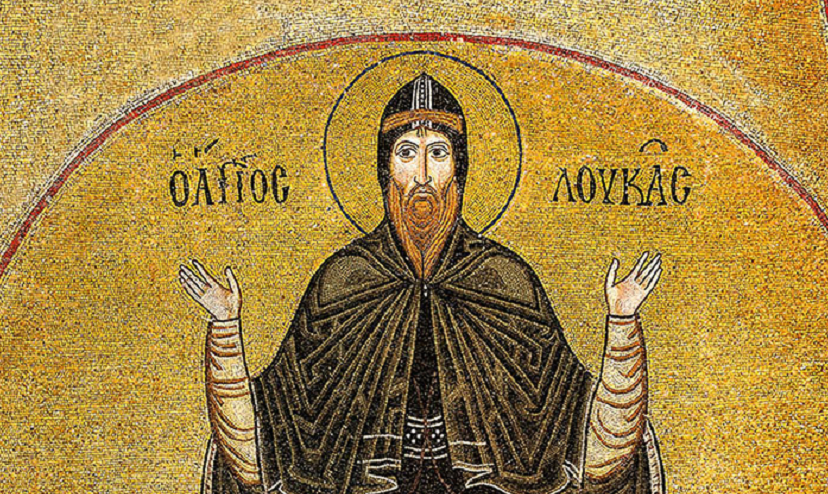
The area of the Monastery is very well organized for visitors, with signs with information, architectural plans and photos. In an introductory sign we read the following:
“The monasteries are a miniature of a Byzantine city. The buildings show the various activities of the monks’ daily life. The timeless use of these buildings in the Monastery of Osios Loukas has resulted in multiple repairs thus they are not preserved today in their original form.
The monks’ cells are housed in three-story wings on the west, north and southeast sides, with open arcades to the inner courtyard. The bell tower rises next to the southwest gate, built on the ruins of a Byzantine church. The two-storey building to the south of the churches houses on the first floor the refectory (dining room), where the monks dine listening to the synaxarium of the day -in the area today there is an exhibition of sculptures. On the ground floor of the building is the large olive mill, indicative of significant oil production.
A large underground water tank served the water supply needs of the monastery. At the warming room, in the northern part of the courtyard, the monks gathered to warm up the icy nights. It is a colonnaded room with cylindrical domes, in which ventilation holes are opened. The old stable is located next to the main east gate. In this two-storey building, the ground floor is intended for animals, while the first floor is intended for conductors and animal feed. On the floor of the restored building are exhibited Byzantine frescoes from the church of Agios Spyridon in Antikyra.
Finally, just outside the east gate is the small cemetery church of Agios Charalambos, built in the 10th century with materials from the neighboring ancient Sterida.”
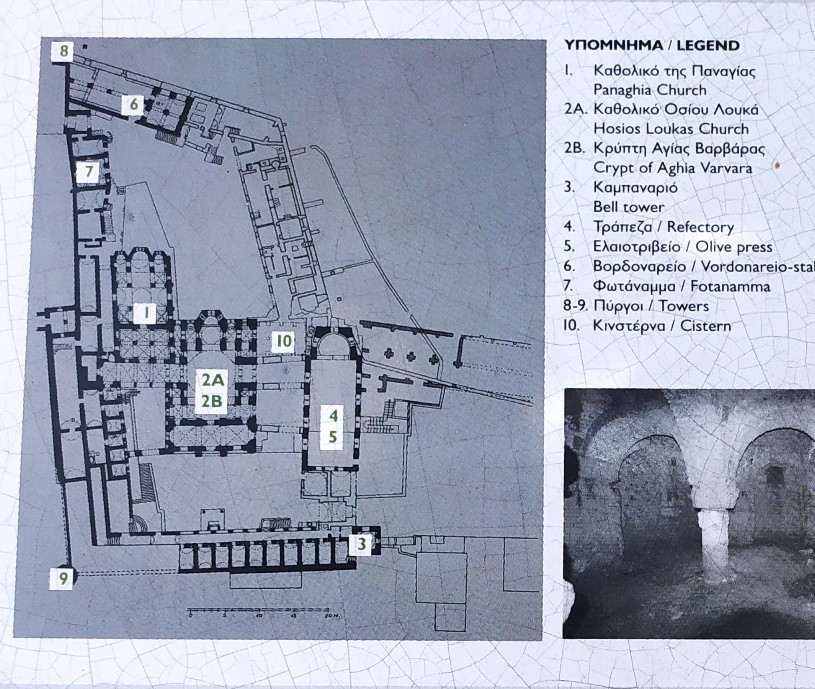
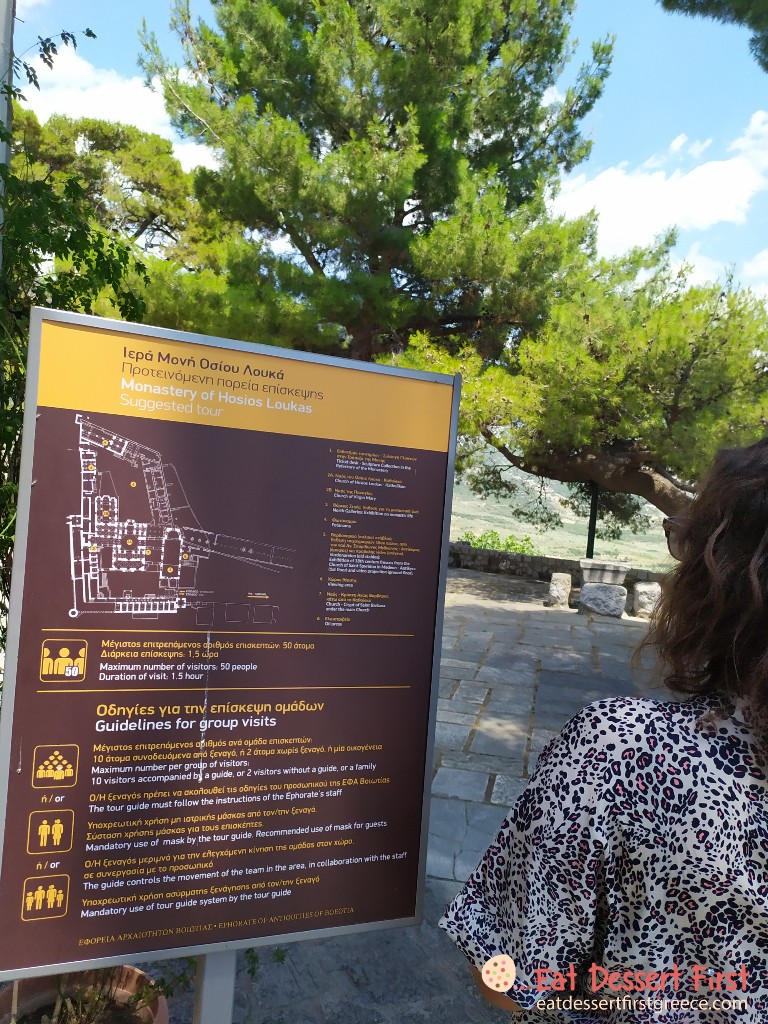
Reportage photography from the Monastery of Osios Loukas

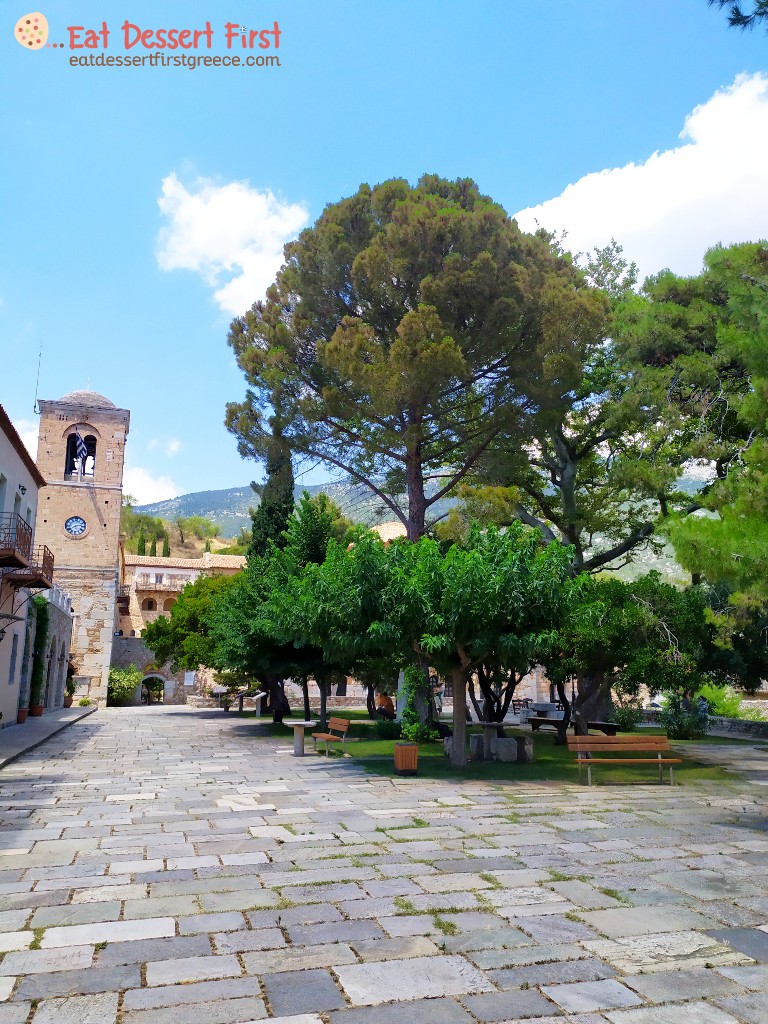
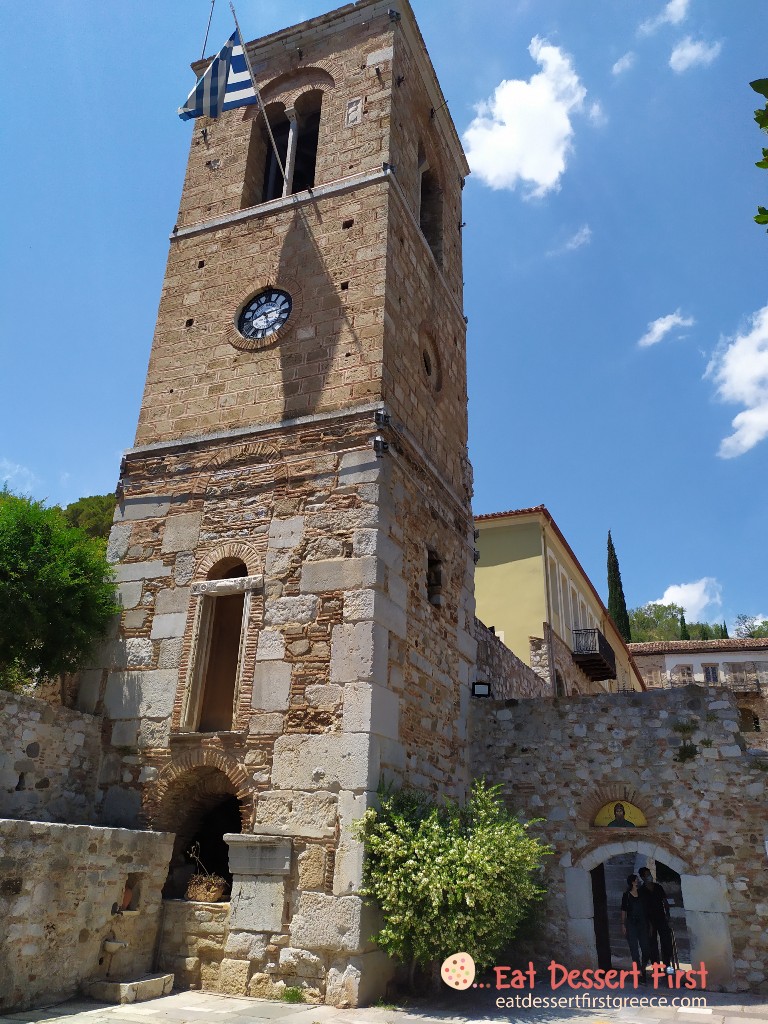



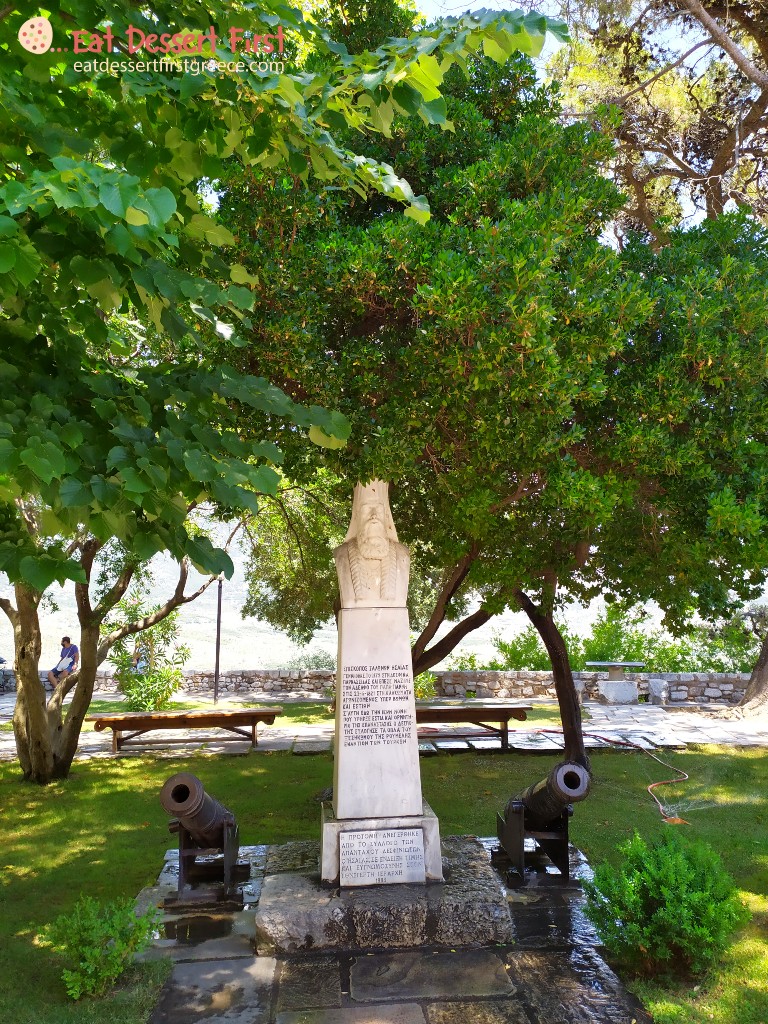


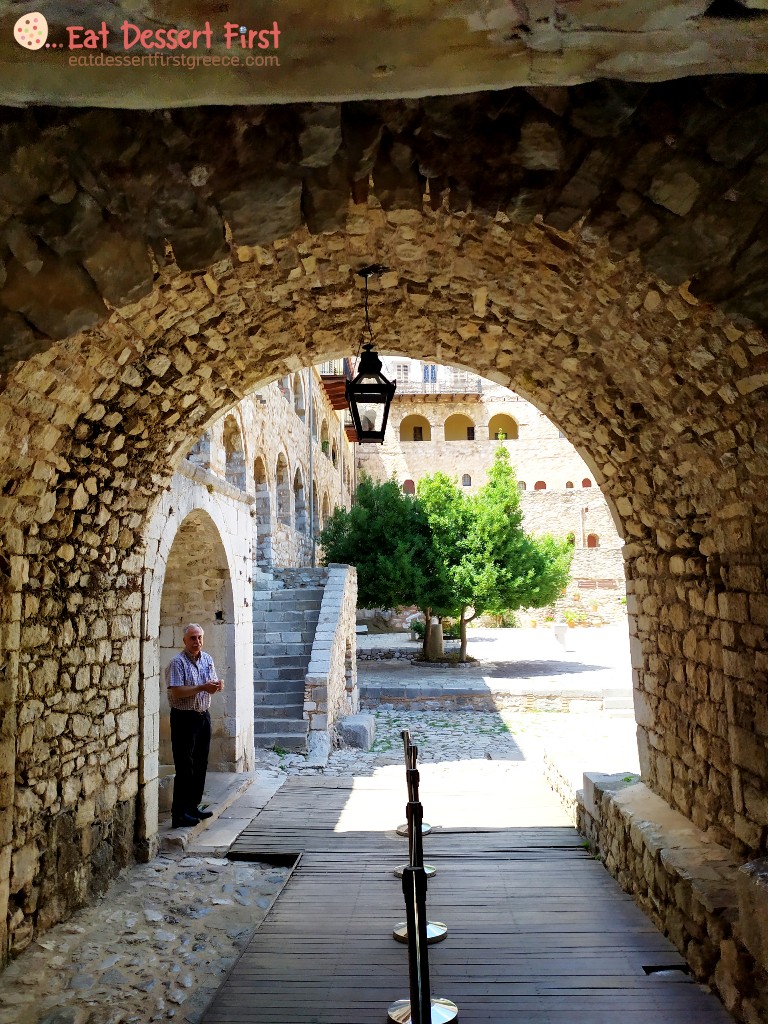

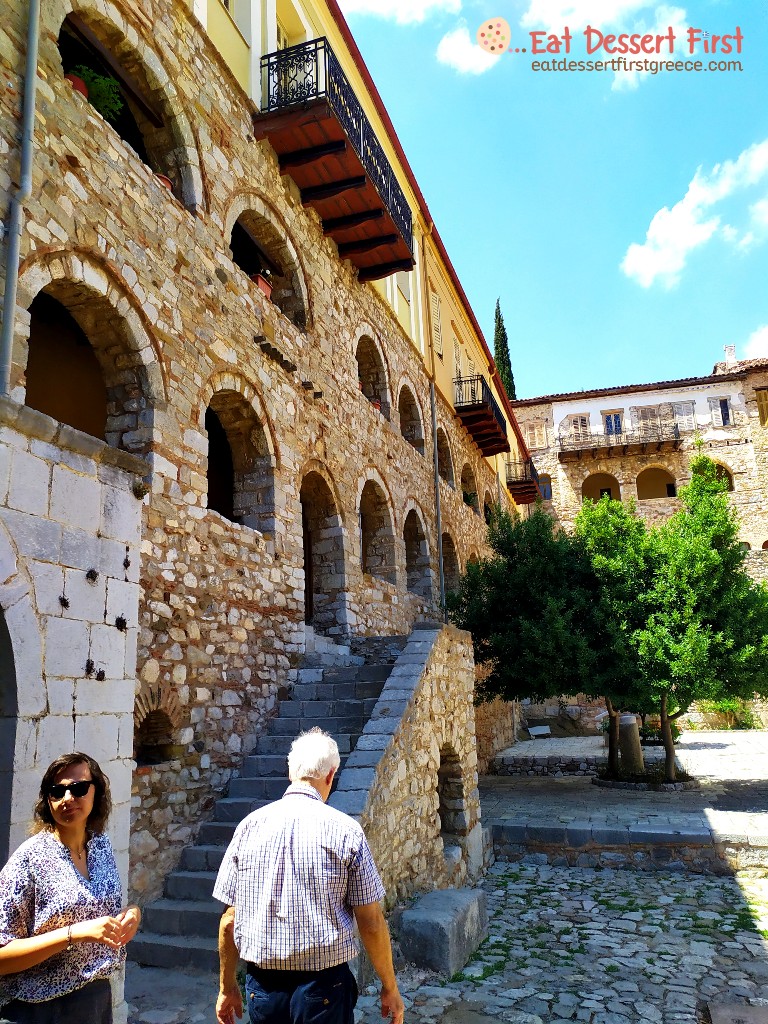
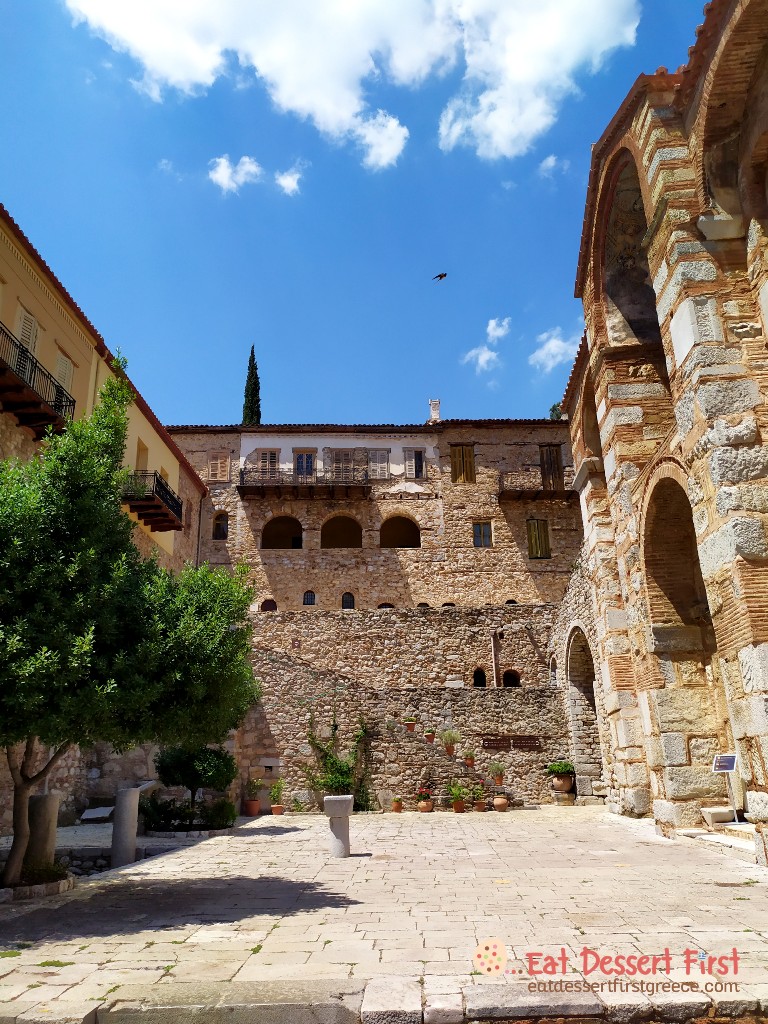

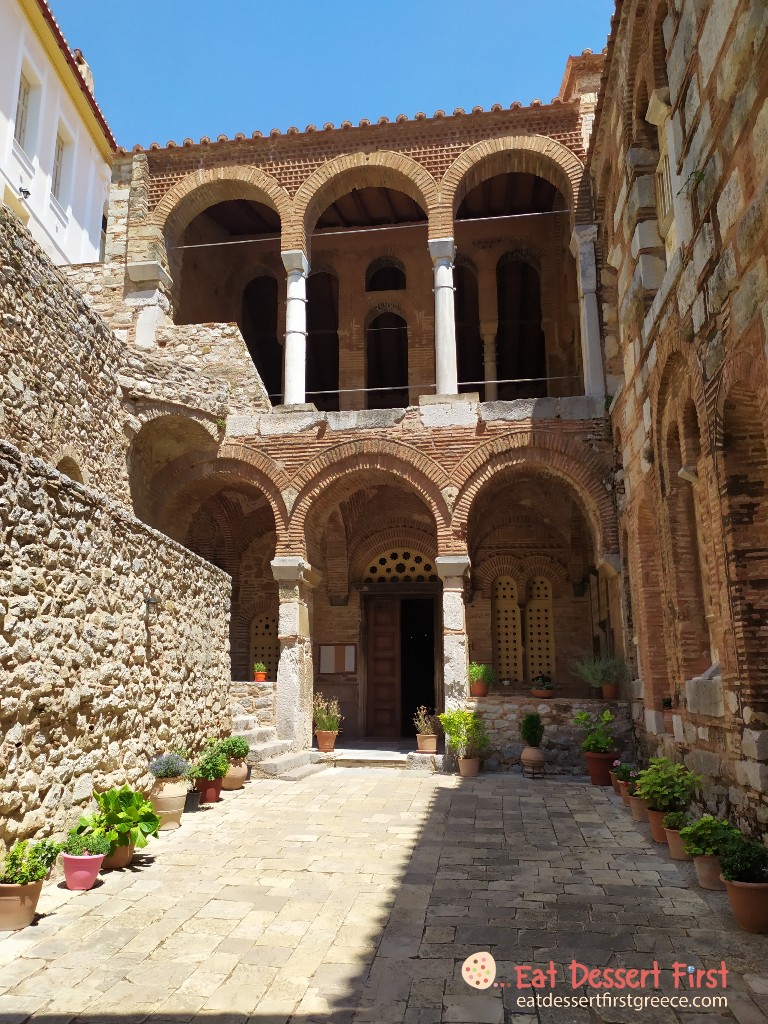
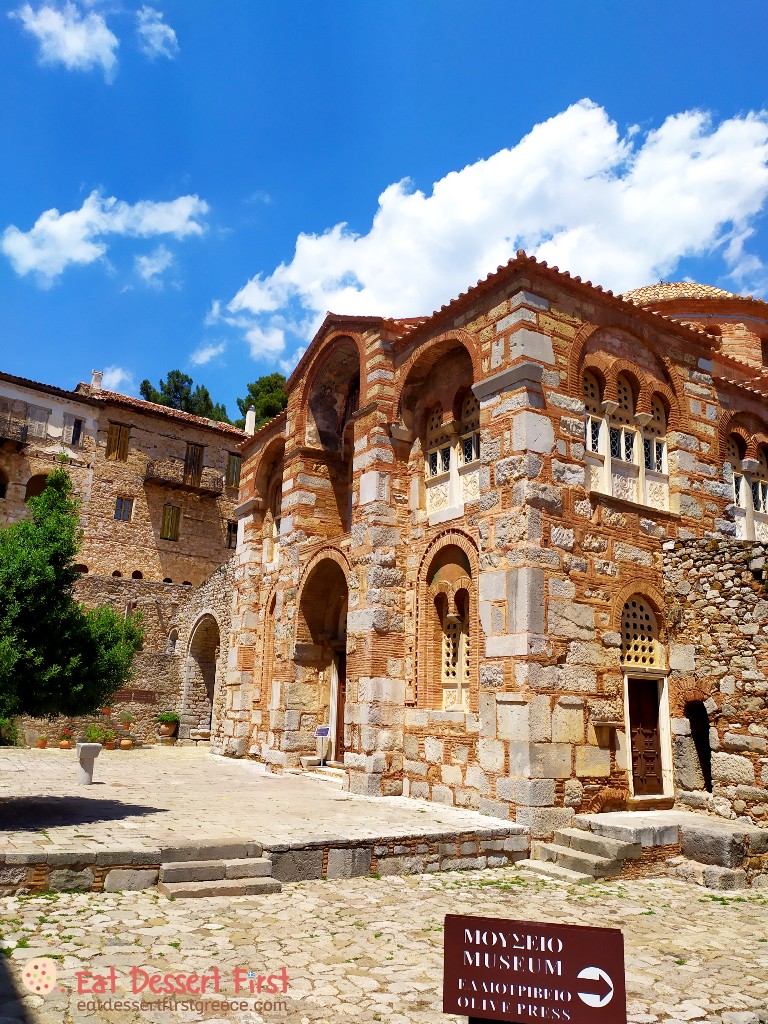

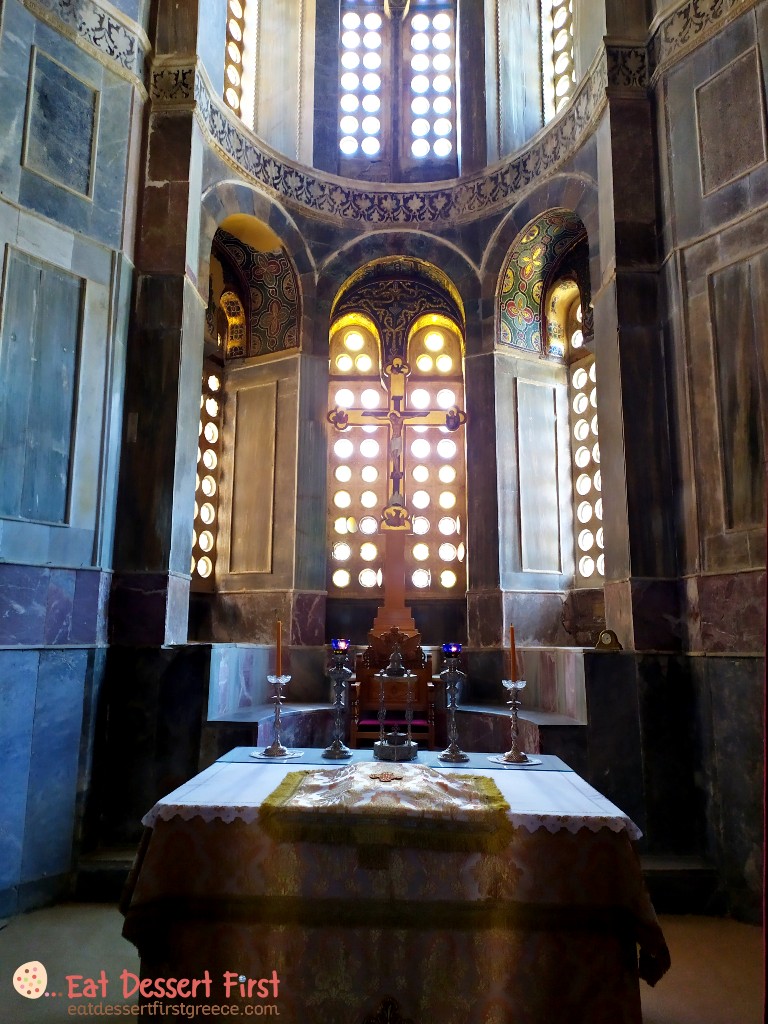
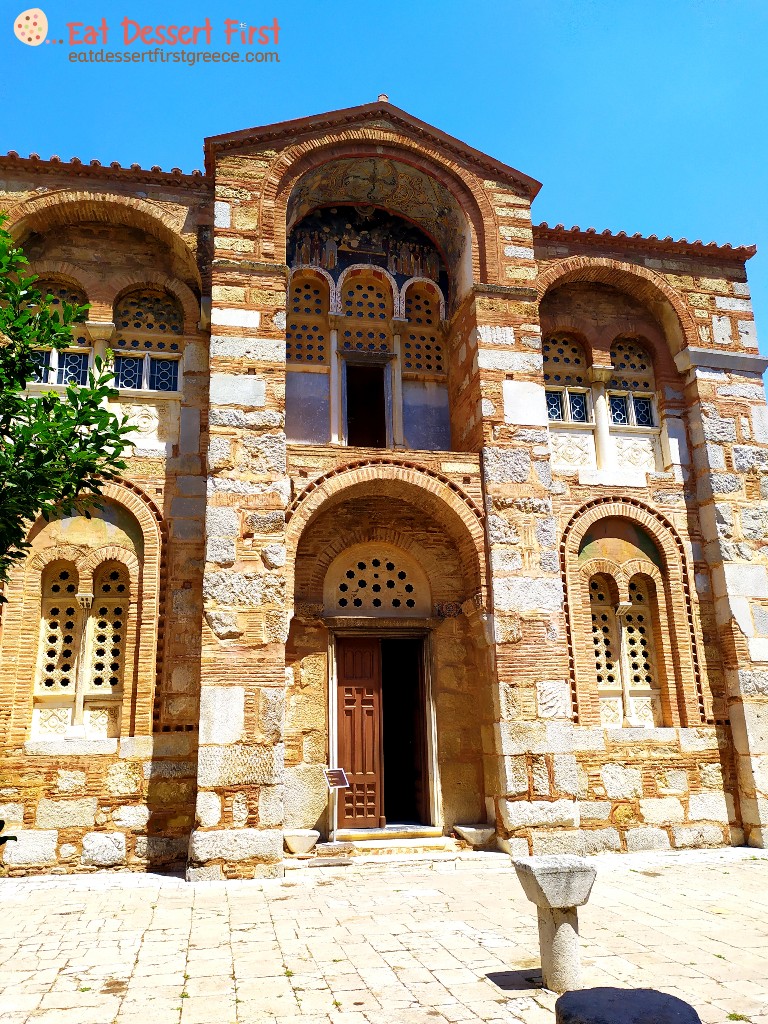
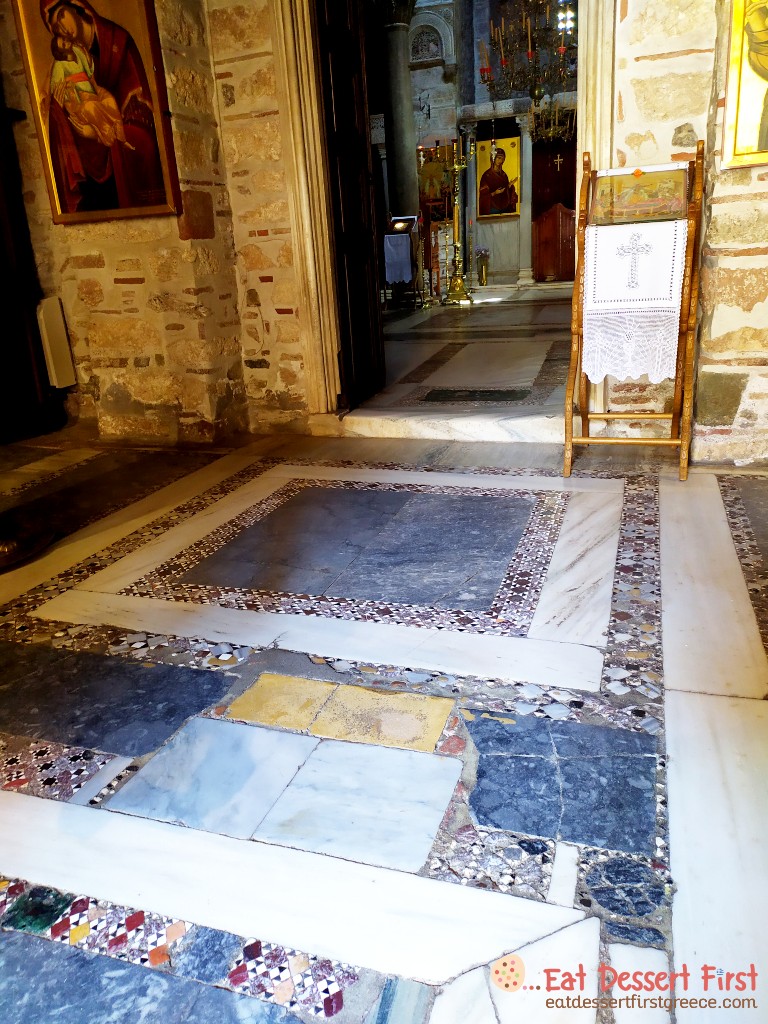
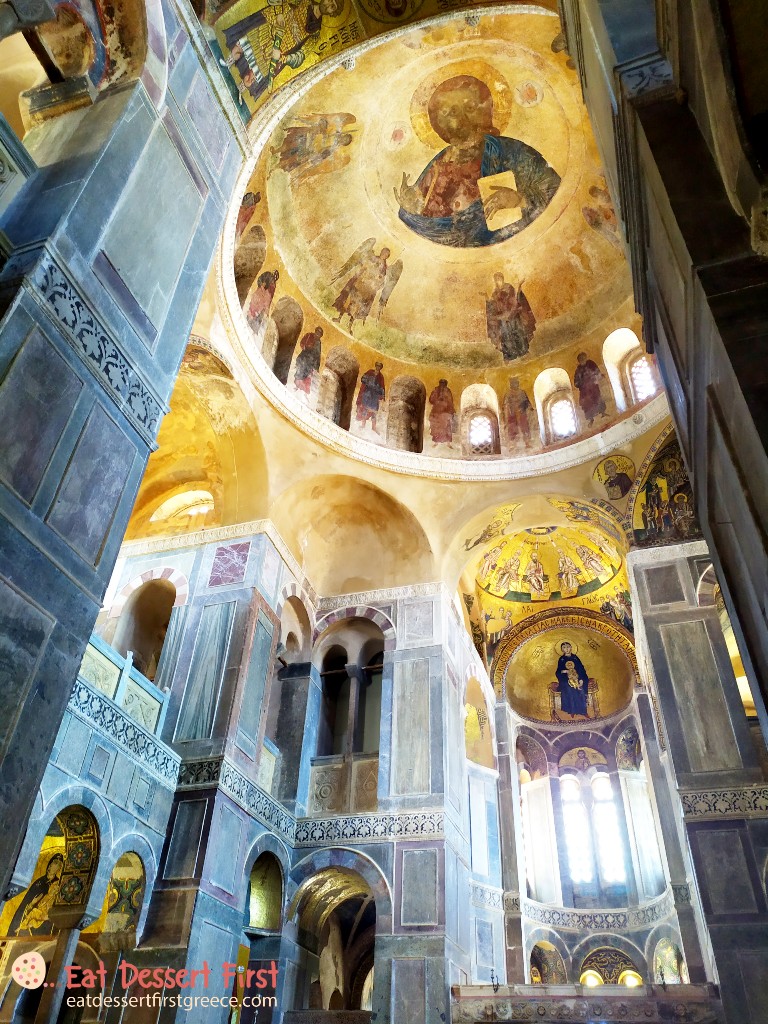
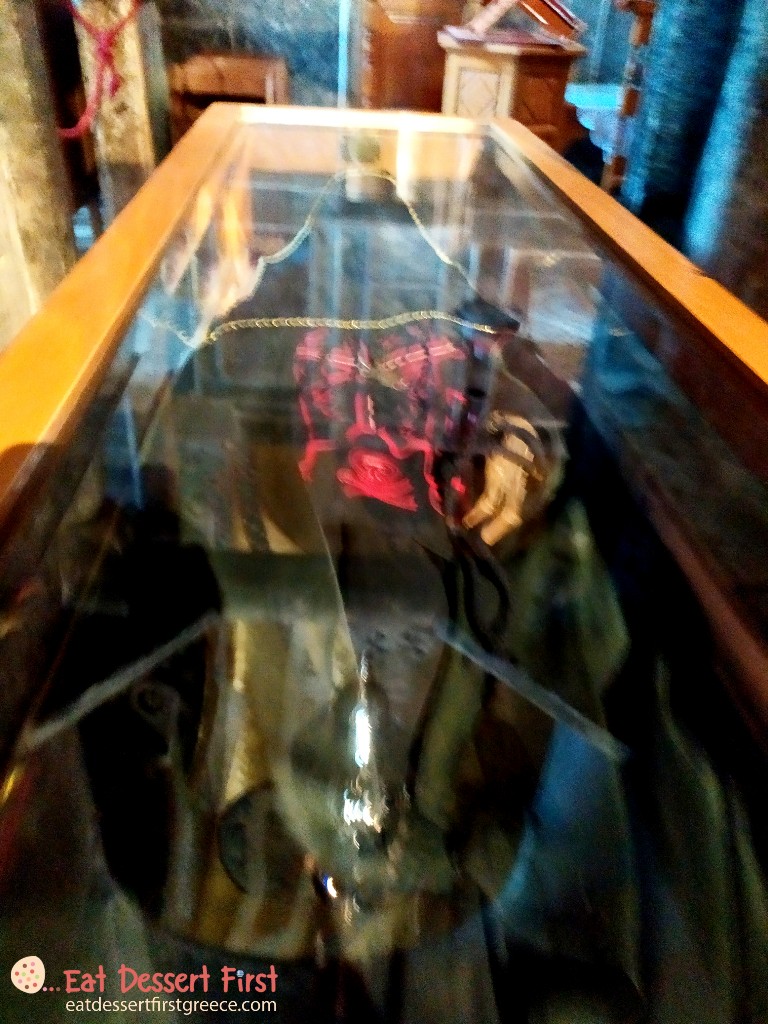

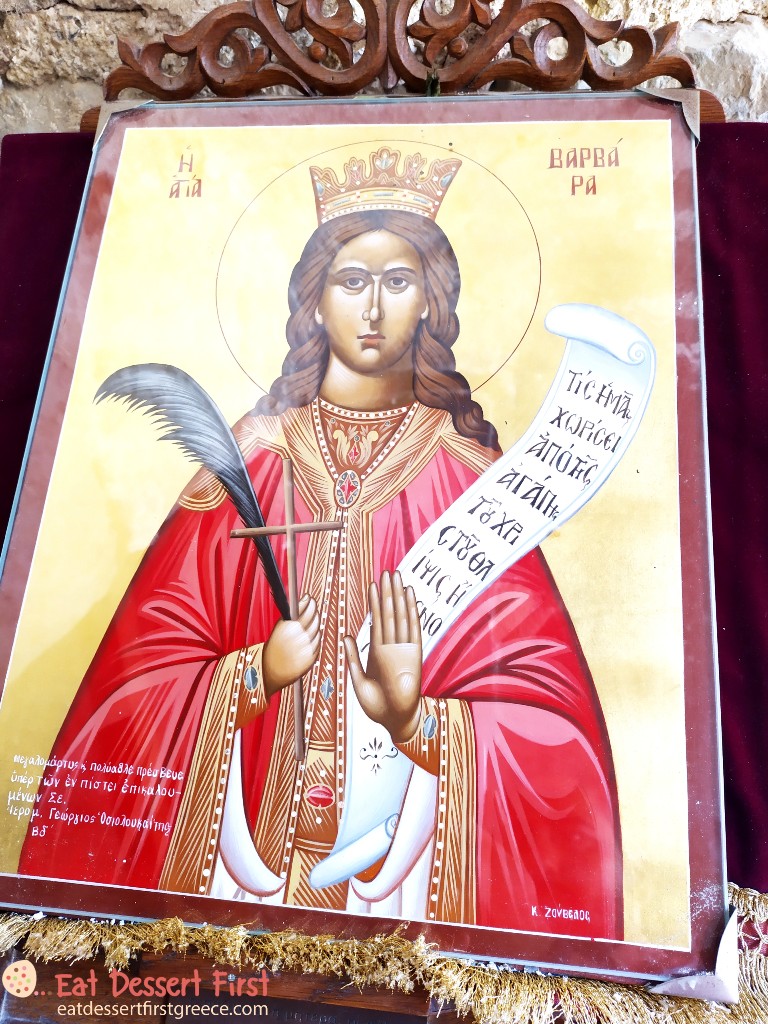



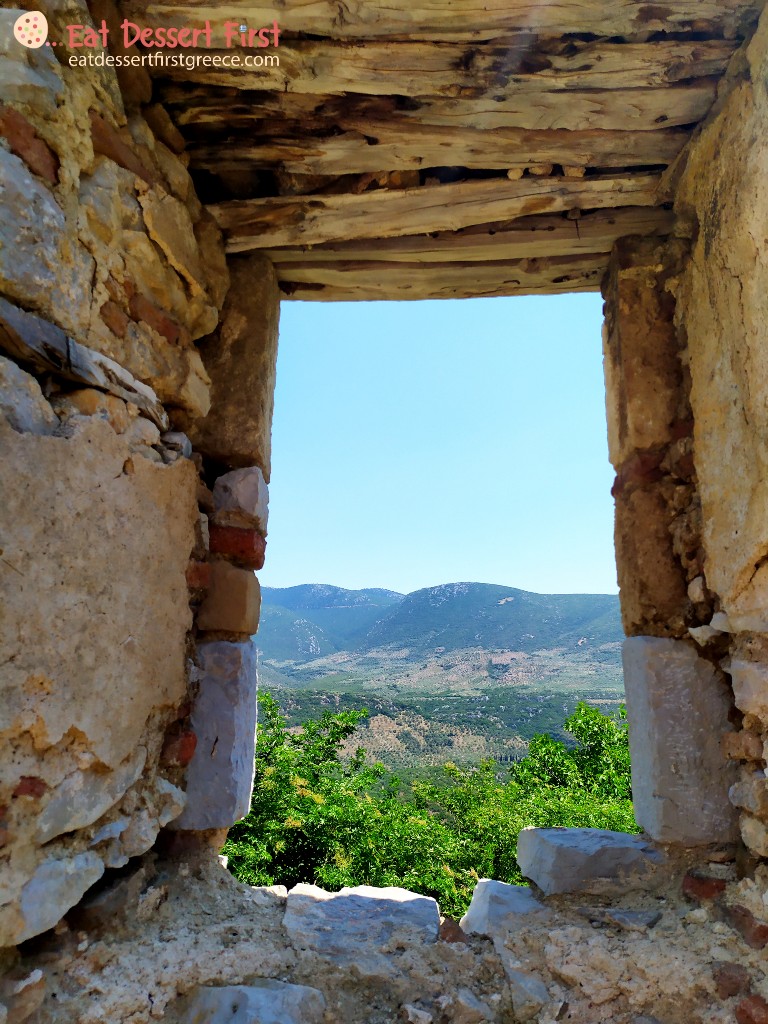
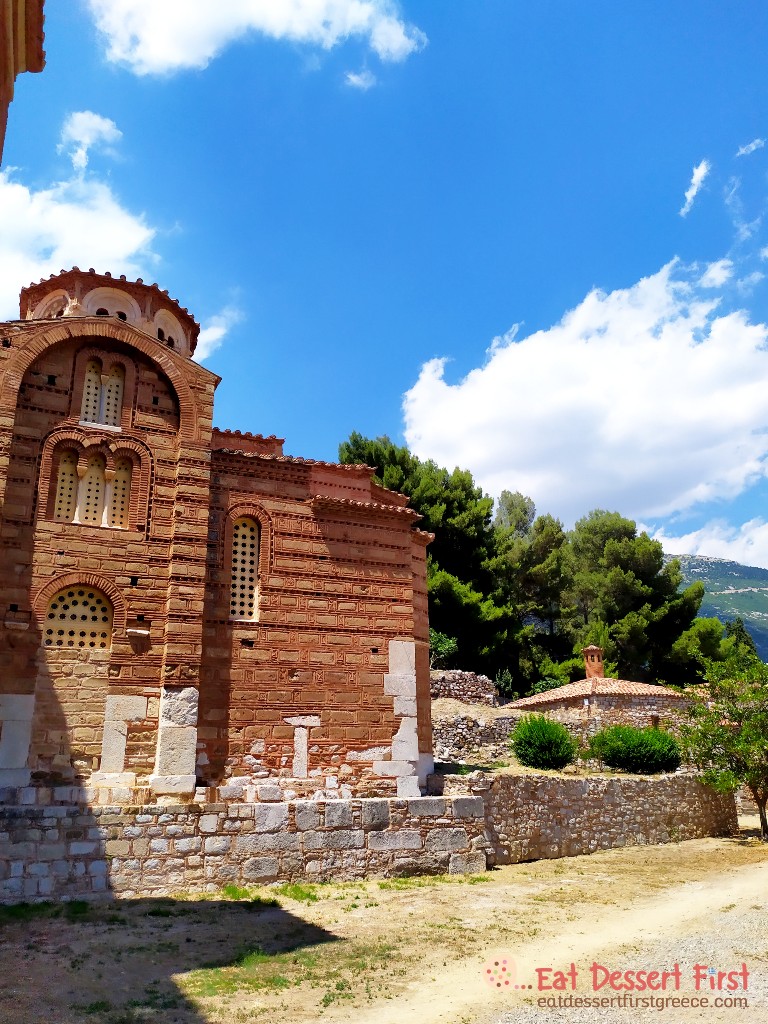

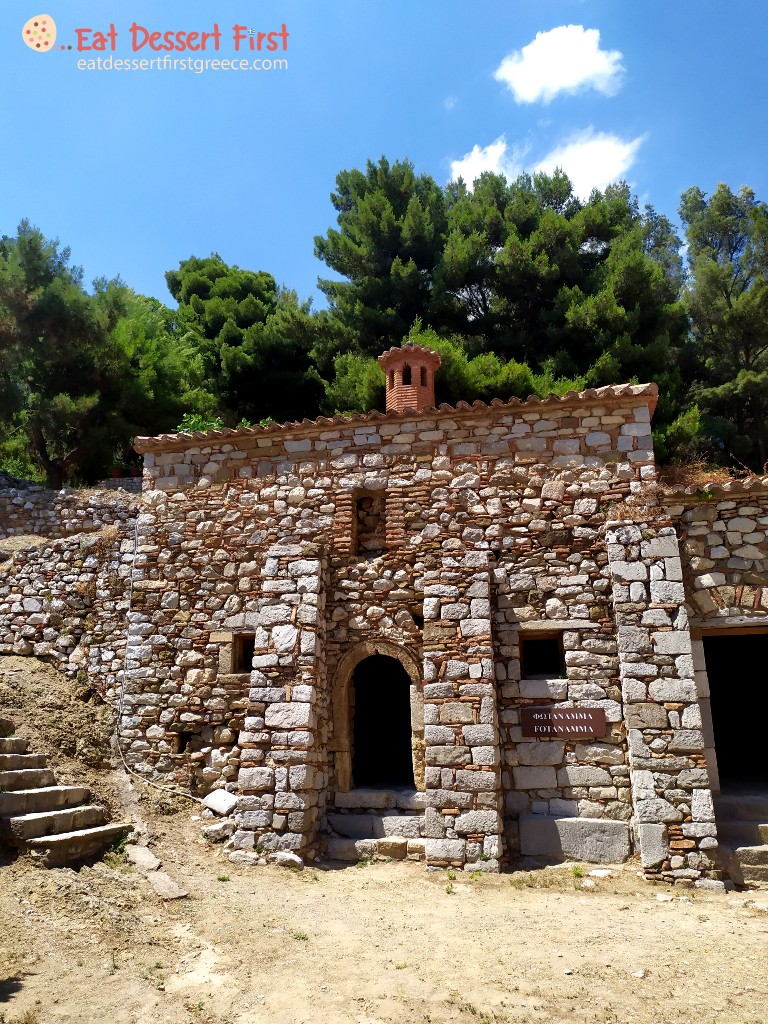
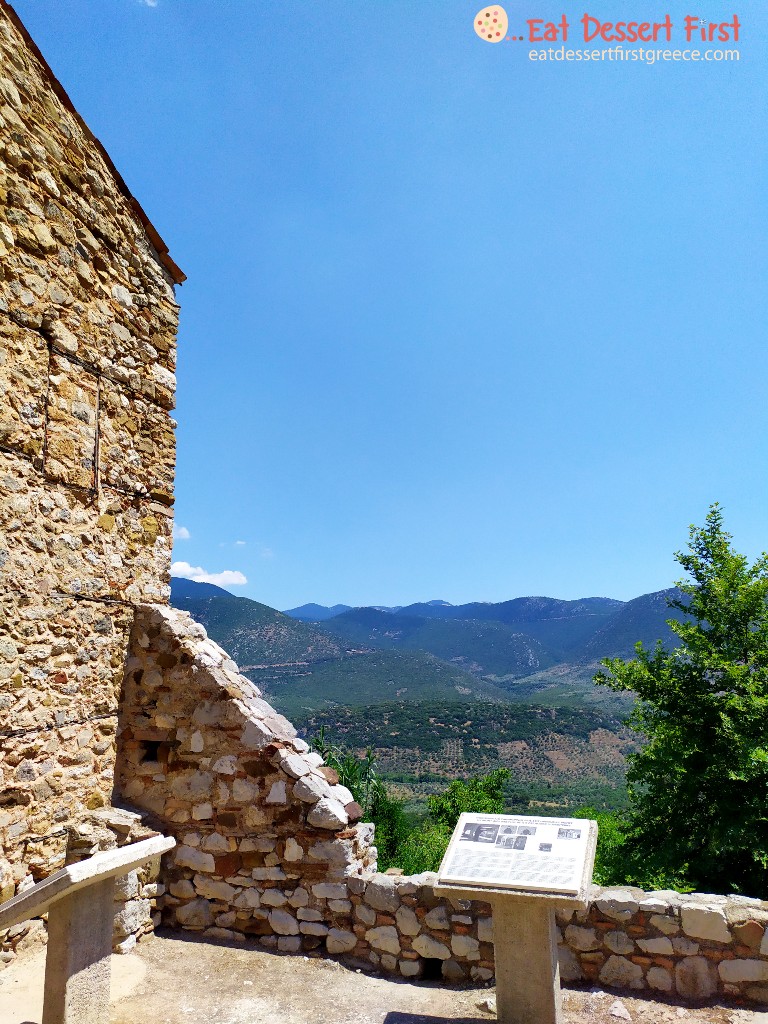

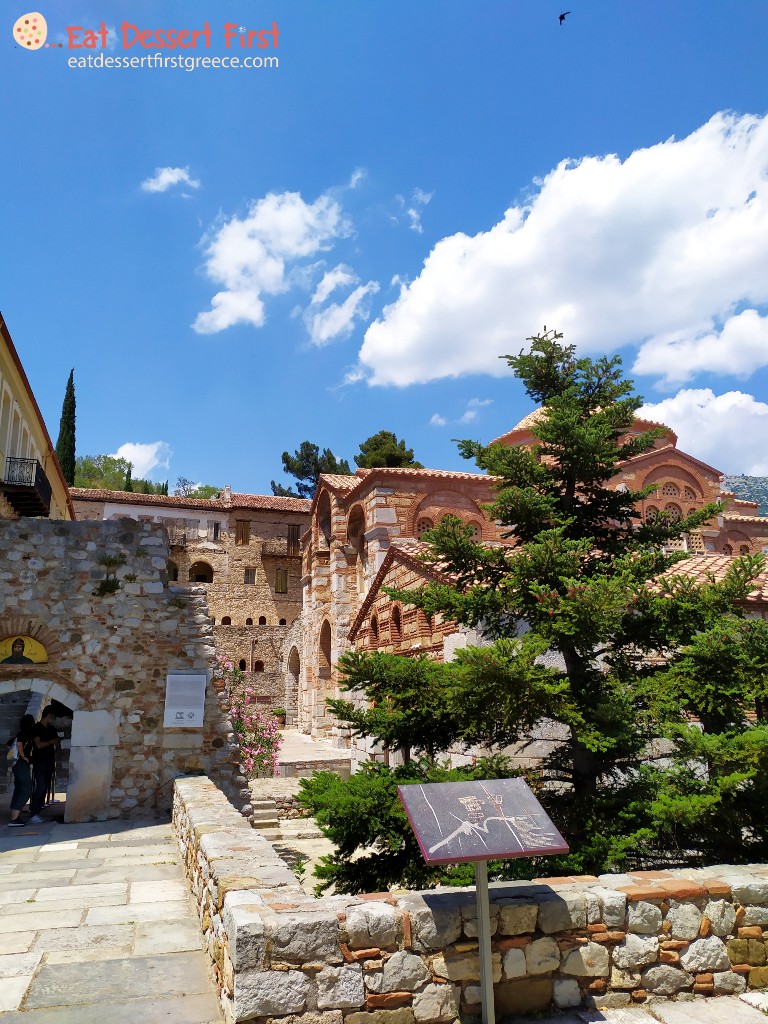

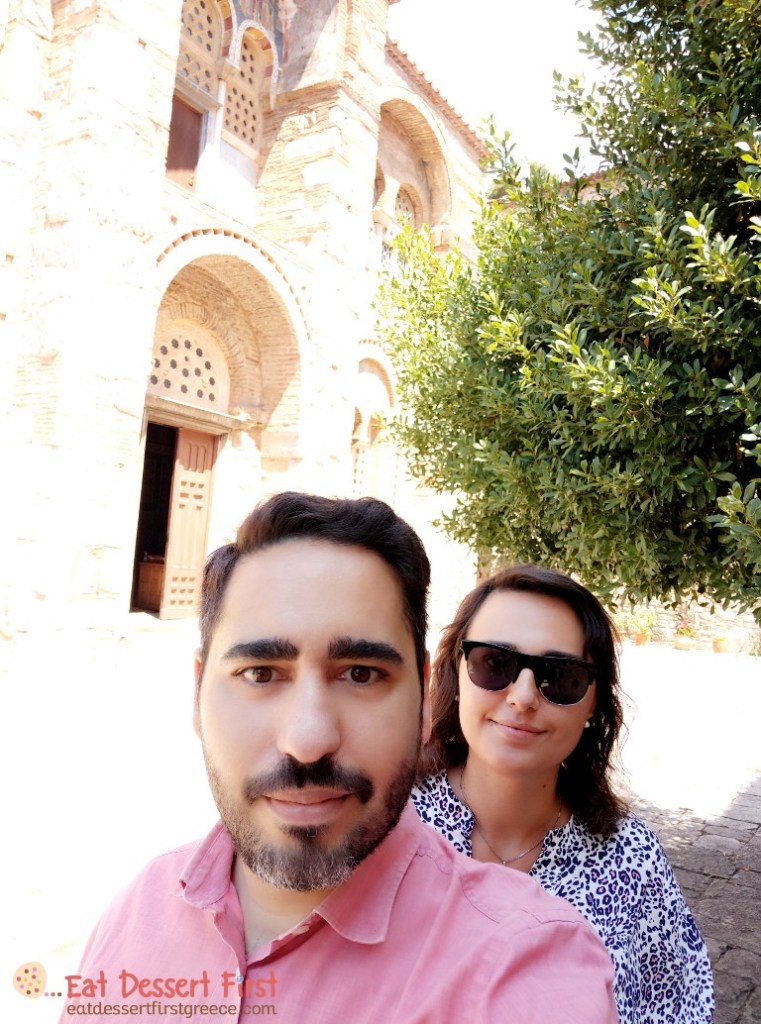

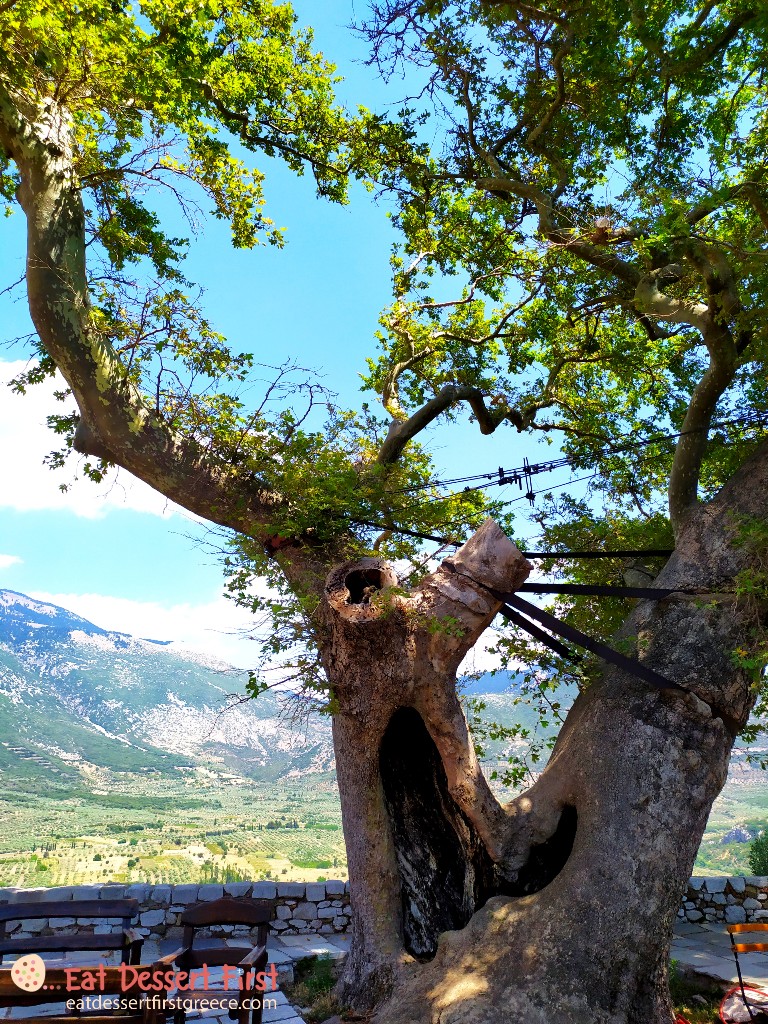
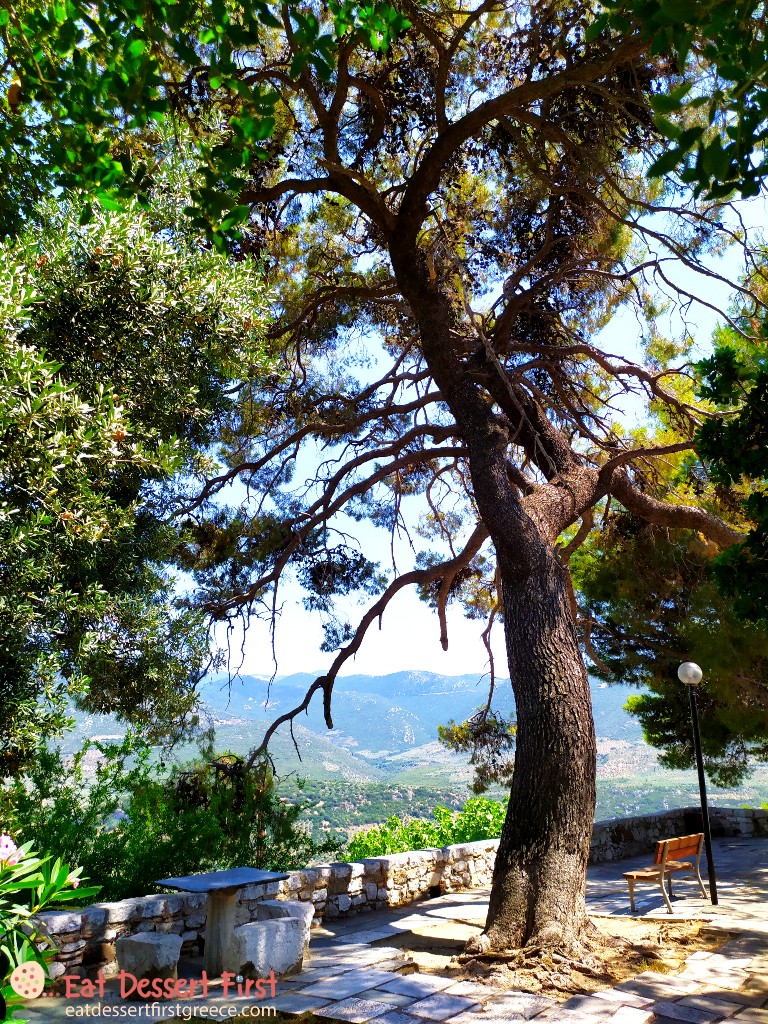
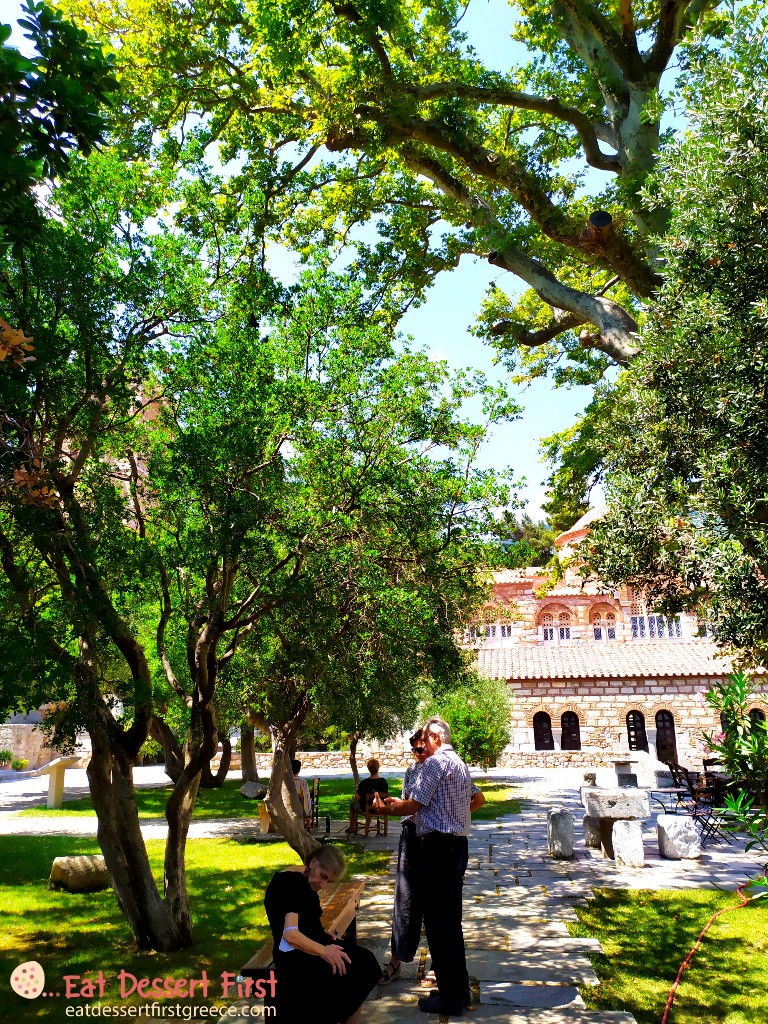
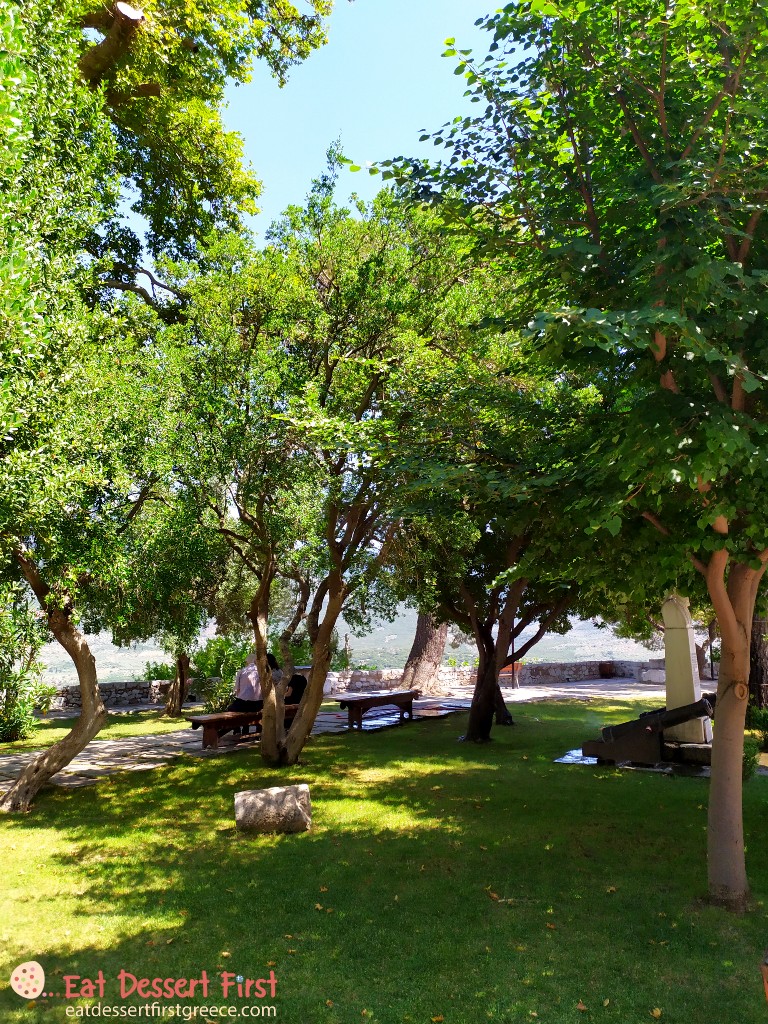

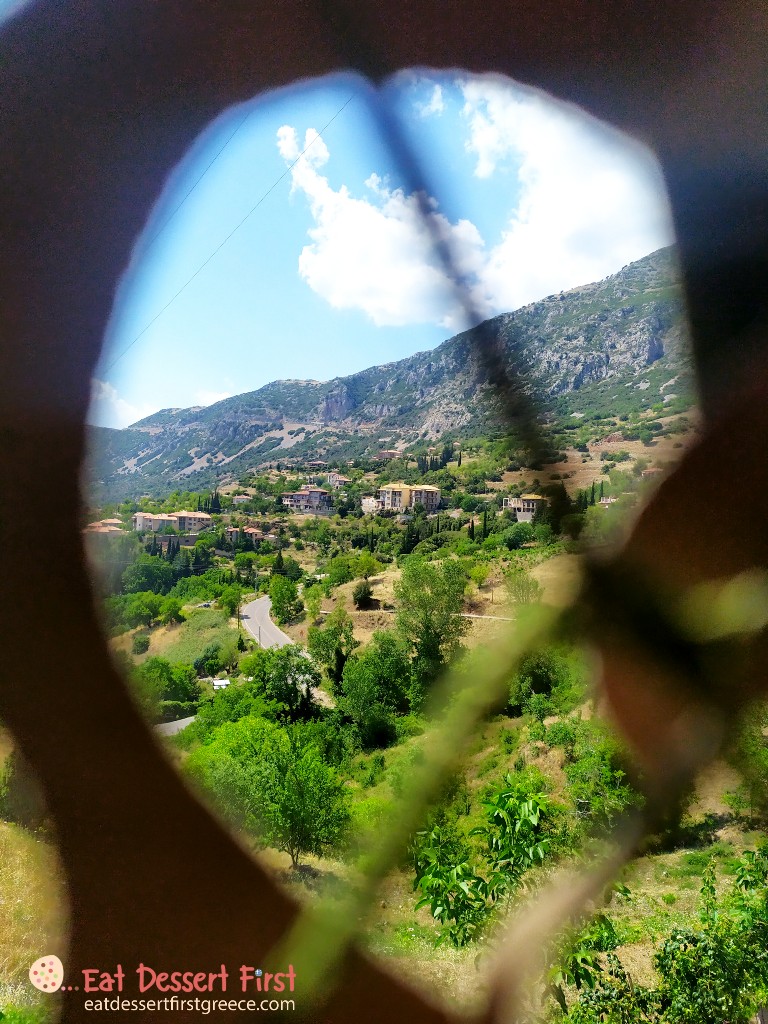
Having enjoyed the peace and tranquility that the monasteries always exude, we took the road that led to Arachova. At the top of the mountains we saw wind turbines collecting wind energy, a kind of Renewable Energy Sources. Otherwise we learned that they are called Mild Energy Sources as they do not require any active intervention in the environment, such as mining, and are also environmentally friendly, without emissions of hydrocarbons, carbon dioxide or toxic waste. So we were very happy to come across wind farms on our travels!

And then we arrived in Arachova, after a journey of about half an hour. Arachova is a mountainous town in the Regional Unit of Viotia, built on the southern slopes of Mount Parnassos, at an altitude of 950 meters. Arachova is a popular destination in winter, as it has a ski resort nearby, but we think it is a beautiful place for summer, so we chose to go there for lunch and afternoon coffee.

So we arrived in Arachova and made our first stop in a nice tavern with good reviews for its food. All the dishes we tried were really delicious, we enjoyed them very much in combination with the fresh air and the nature that surrounded us.
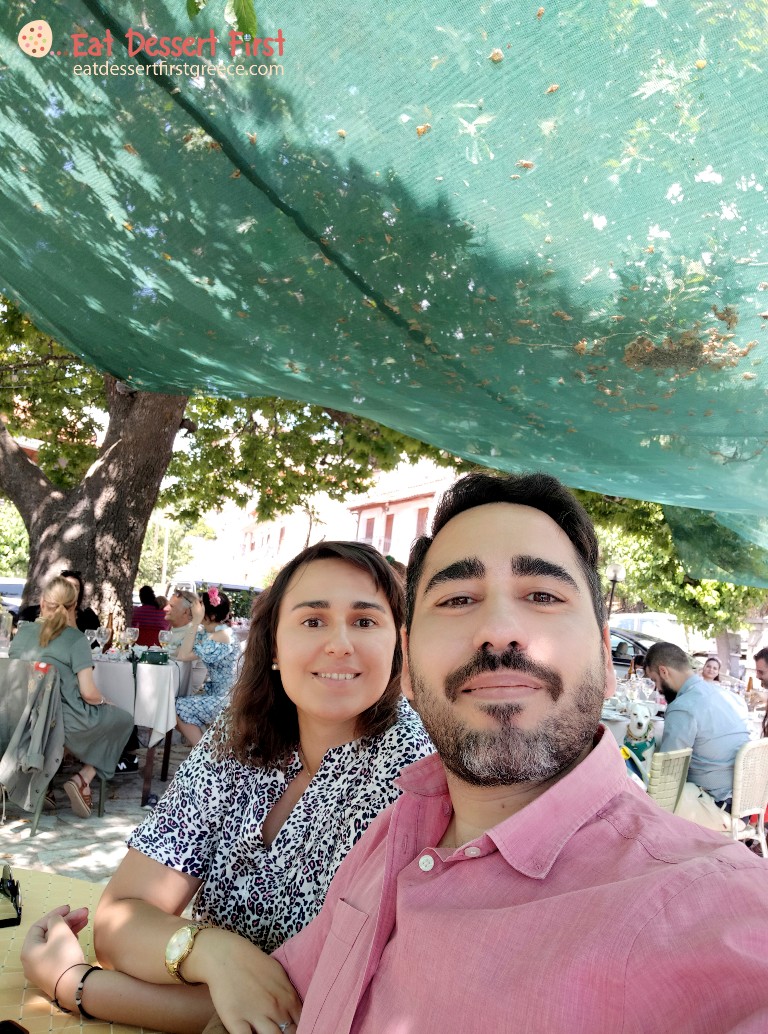
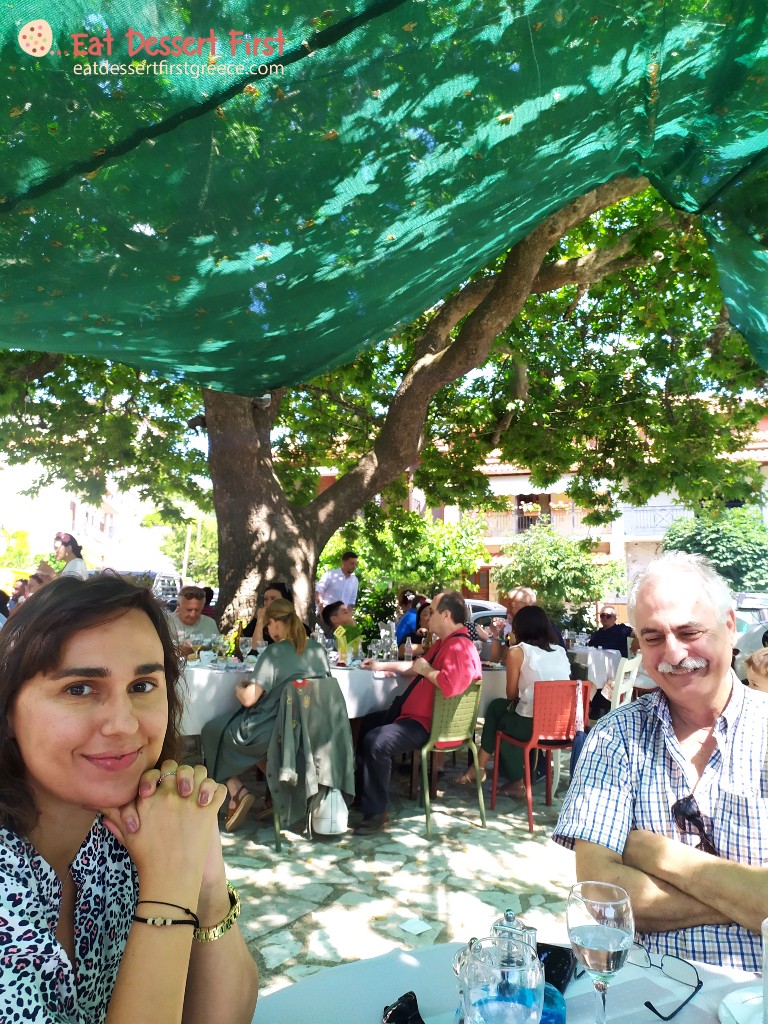

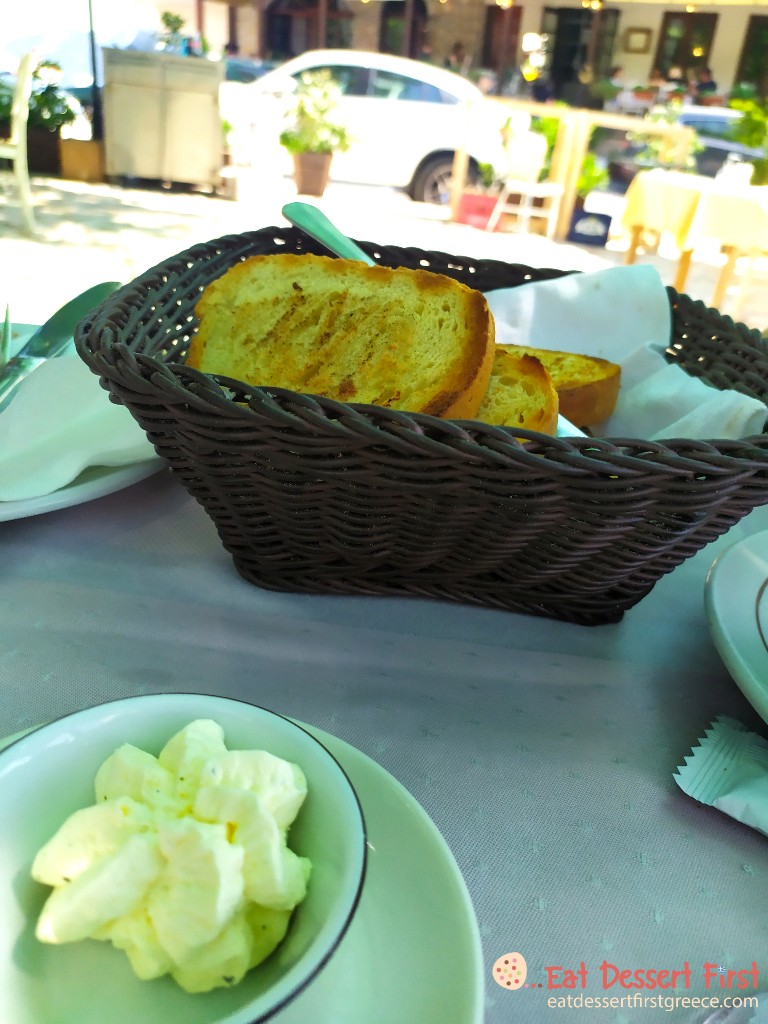
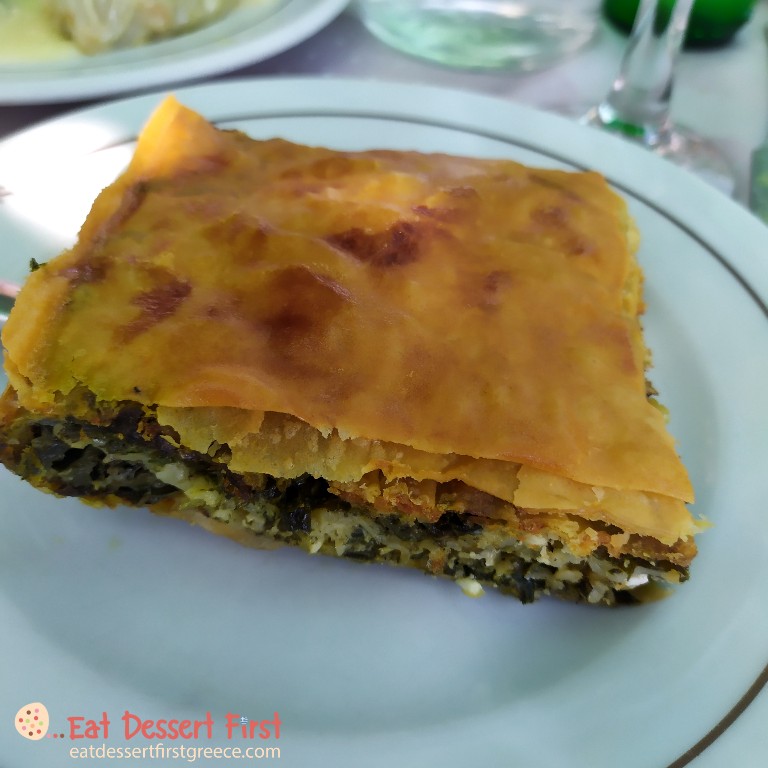


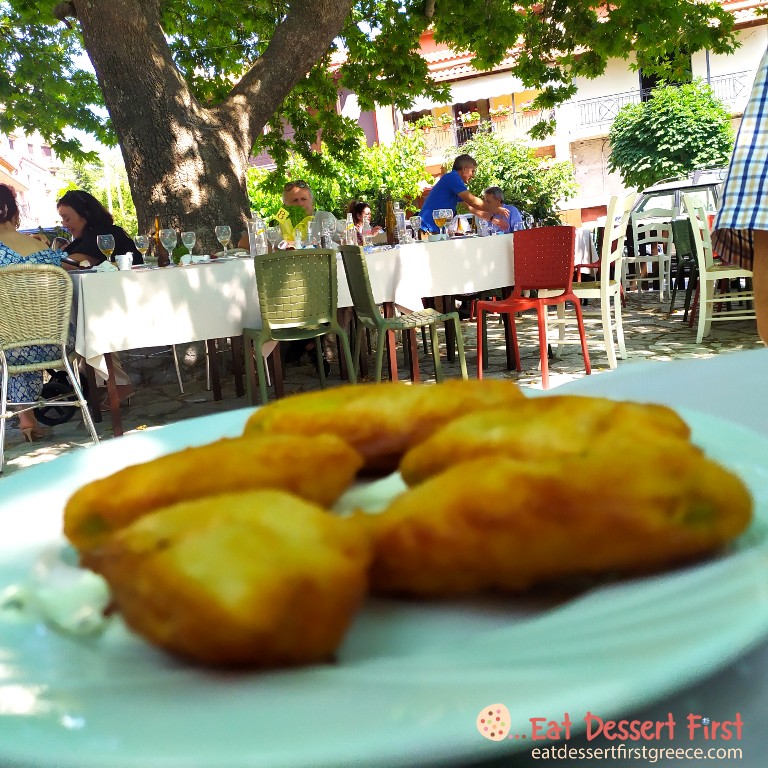

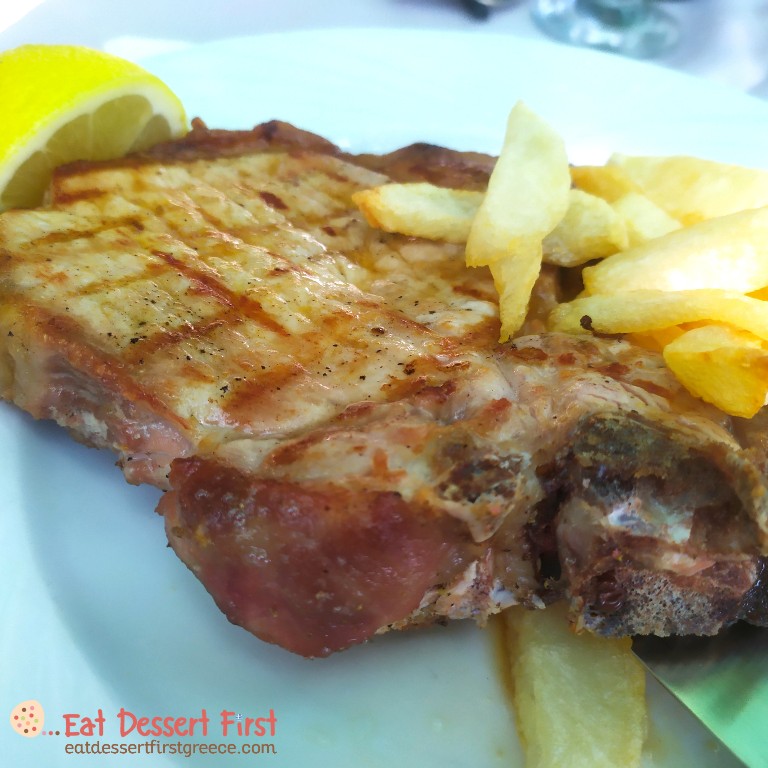
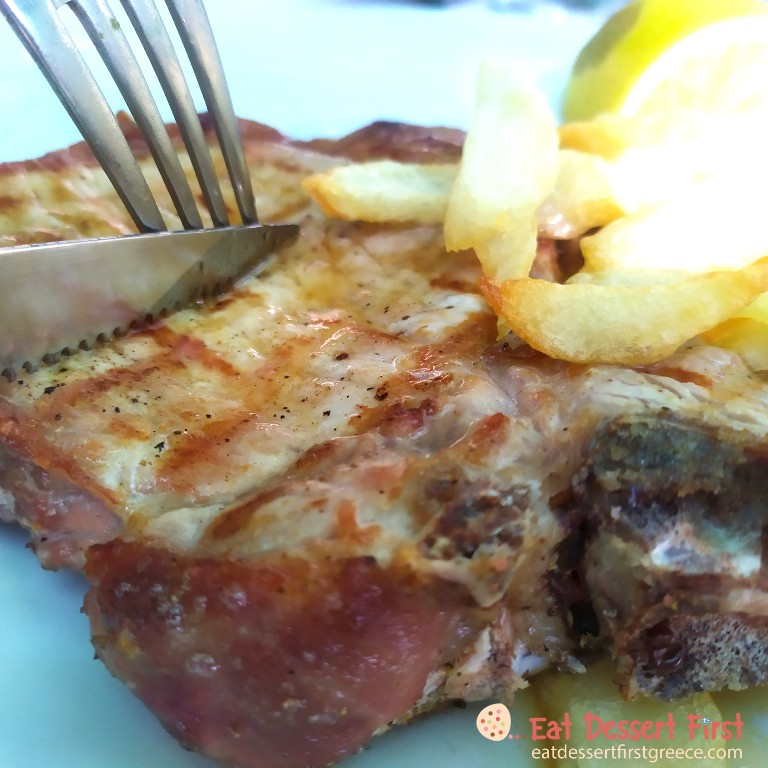

We liked everything we tried very much but what we wil remember are the homemade delicious lachanodolmades and the fried zucchini flowers, which we tried for the first time!Delicious food combined with a wonderful view is the best!


We continued walking in the alleys of Arachova, where we saw small shops selling souvenirs and local products. One of the local products of Arachova is formaela, a hard cheese produced only there. We read that its name has been registered in the European Union as a Protected Designation of Origin (PDO) since 1996. New information and a nice walk to digest, before sitting somewhere for coffee and dessert!

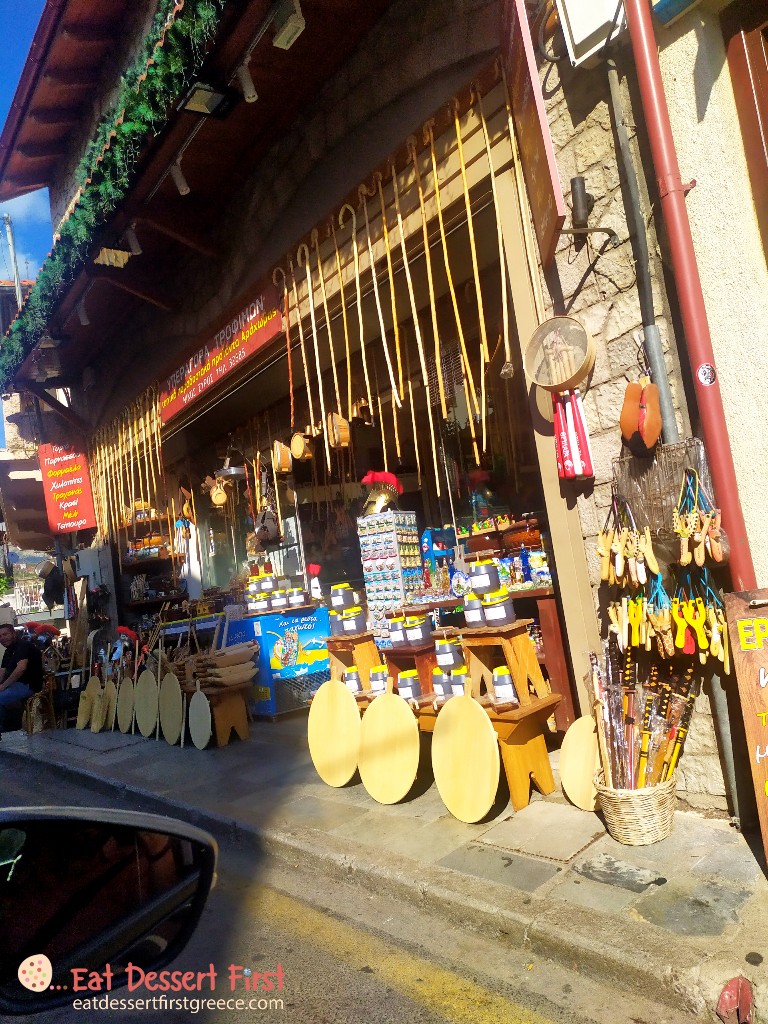
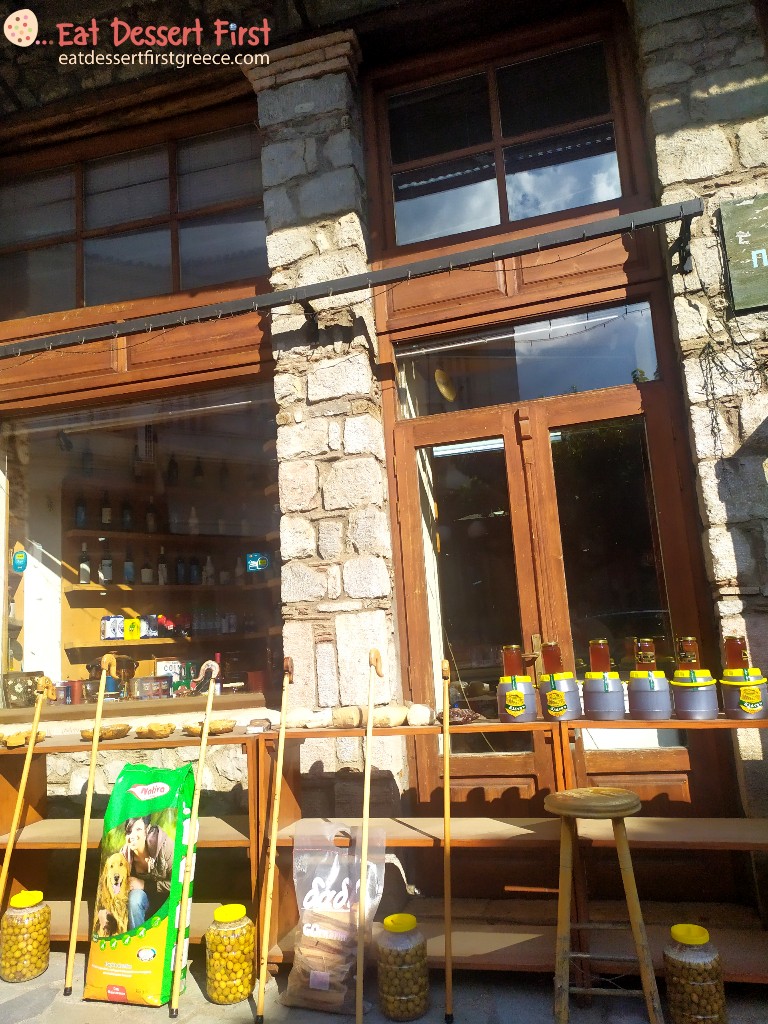
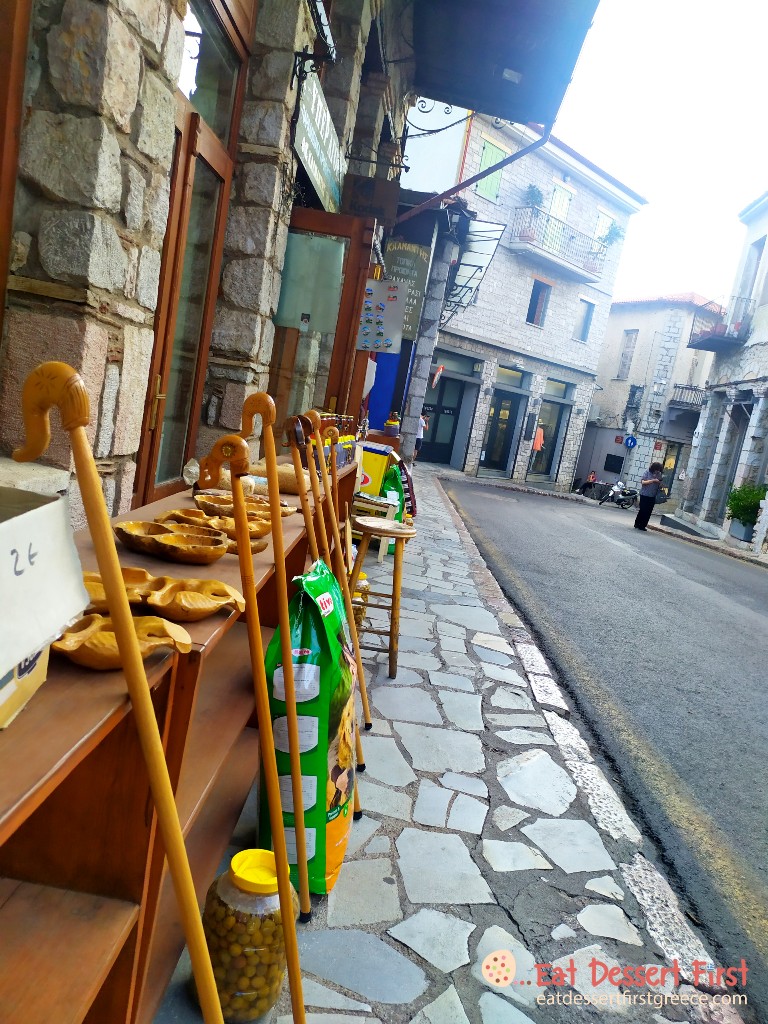

Taking our walk in the picturesque streets of Arachova we reached a nice square with cafes. We chose one and enjoyed Greek coffee with desserts, whatever each one preferred!
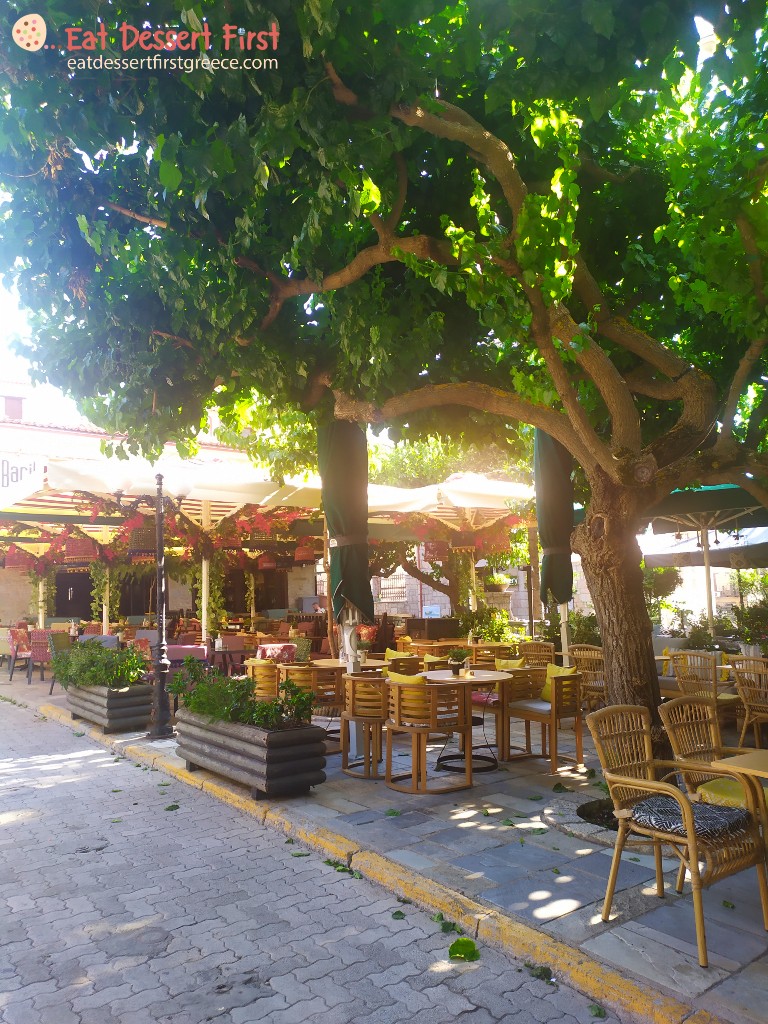


After eating our delicious sweets, we continued walking to the place where we had left the car, and saw other beautiful places of Arachova.


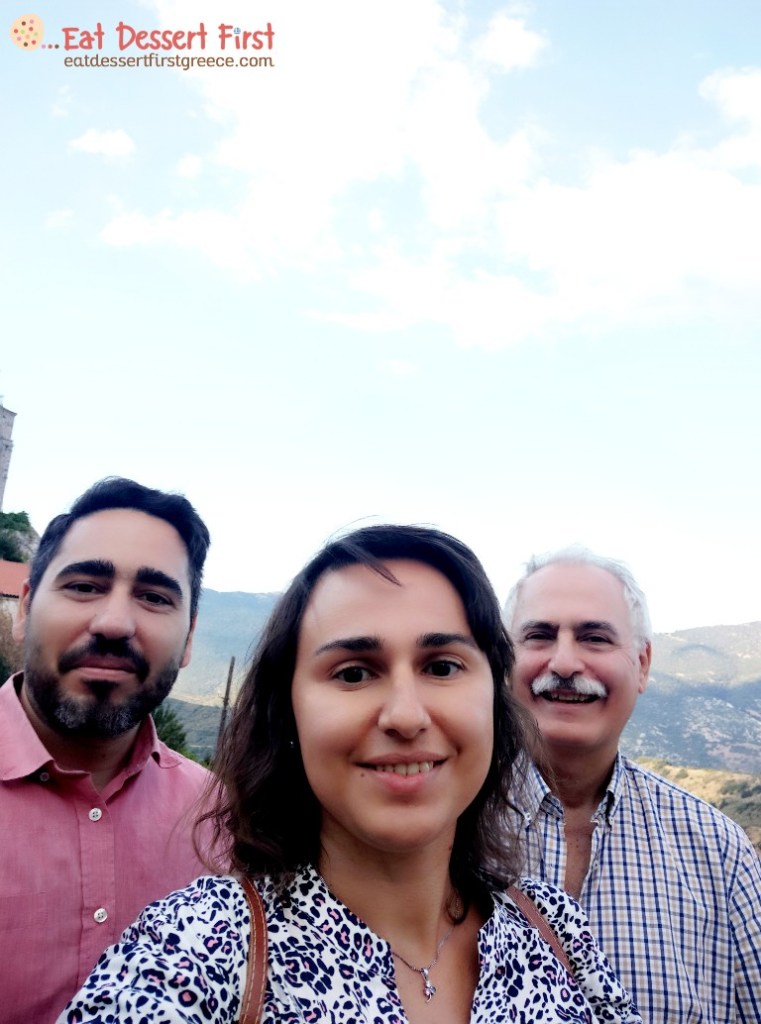

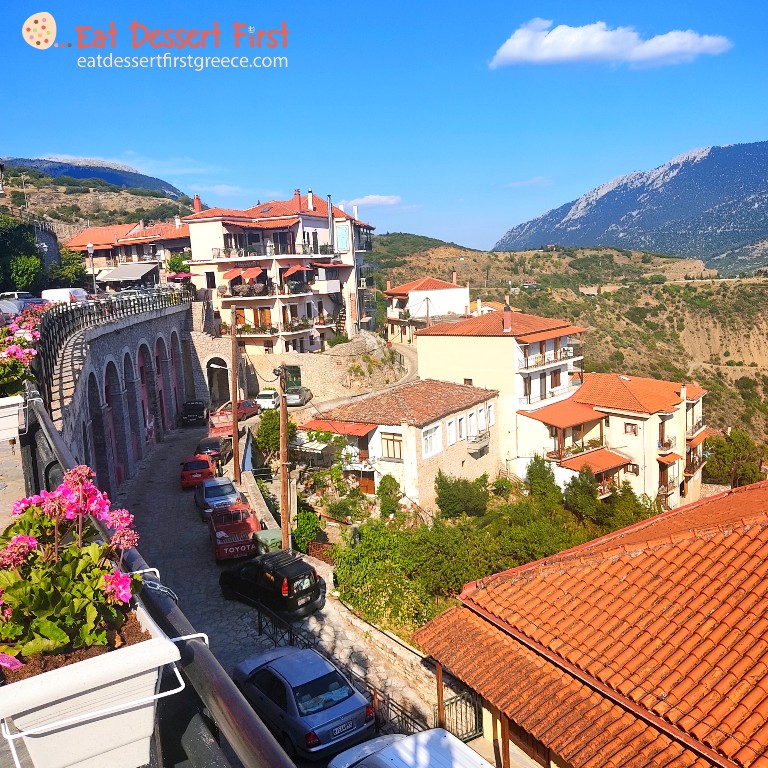
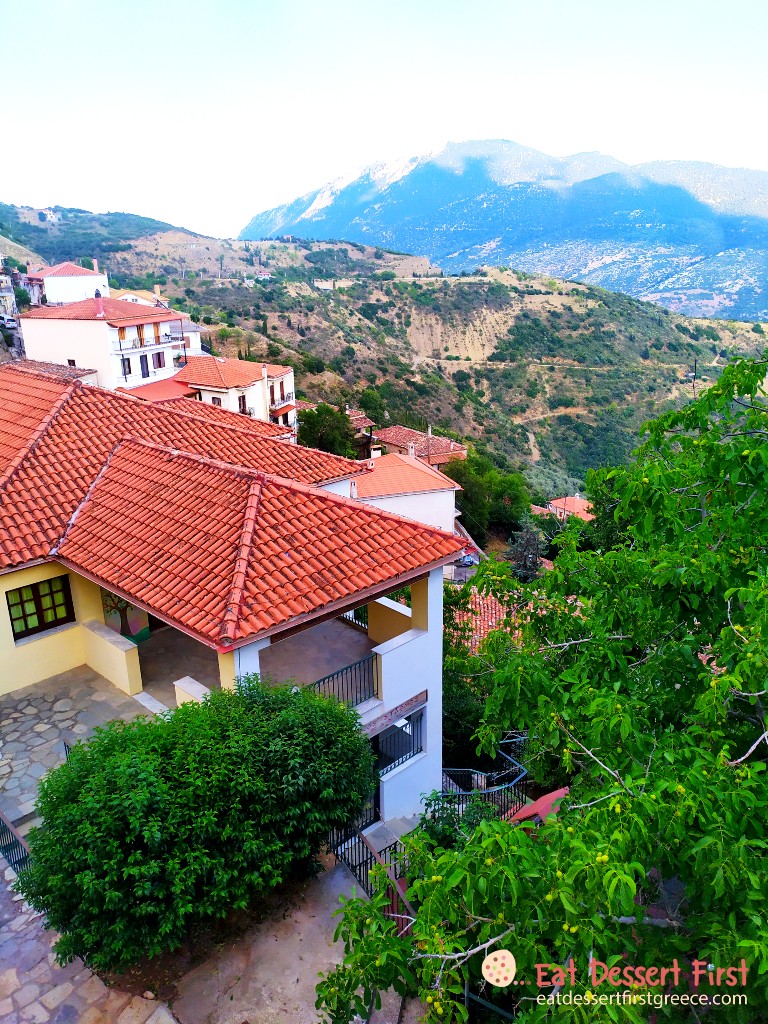
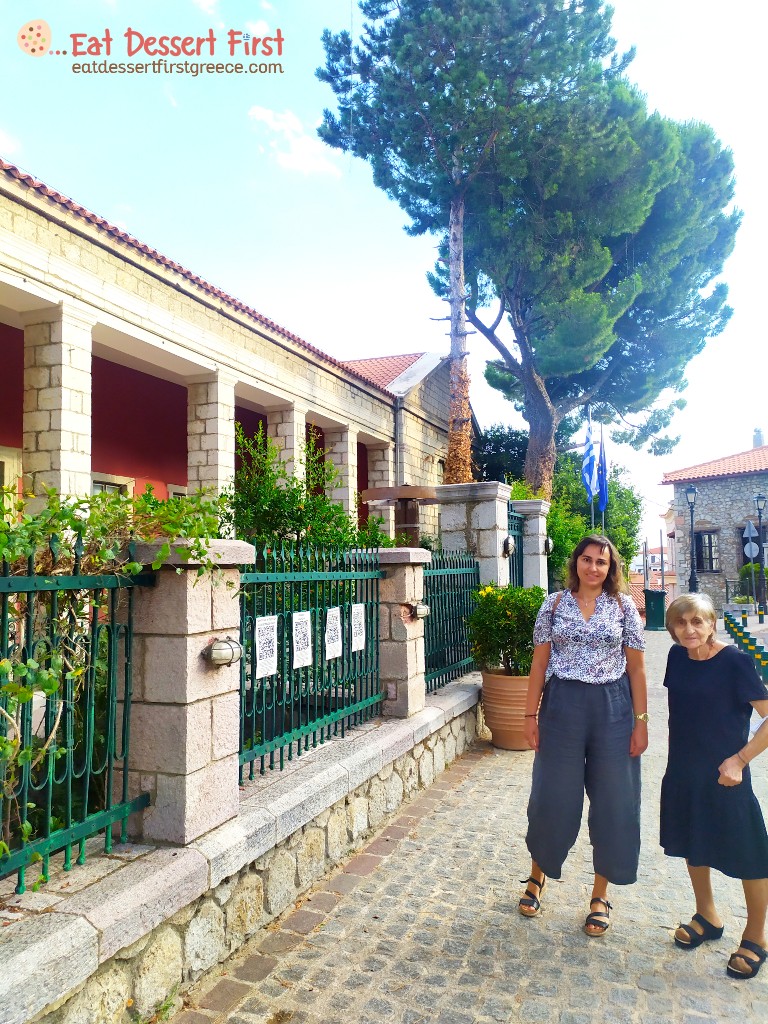
On the outer railings of the museum there were information posters with QR codes, which led you to a page with information about the museum. There we read that the Ethnographic Museum of Arachova is housed in an old neoclassical building, next to the famous clock of Arachova. It was built in 1908 thanks to the sponsorship of Andreas Syggros to operate as an elementary school. Thus it replaced the first old primary school of Arachova that was built in 1830 with financial support from Ioannis Kapodistrias. In 1984, the Minister of Culture Melina Mercouri decided that the old school of Arachova should be classified as a historical monument. In 2003 the neoclassical building ceased to function as a school, as a new building was built to house it. Today, the neoclassical building is completely renovated and houses the Ethnographic Museum of Arachova.
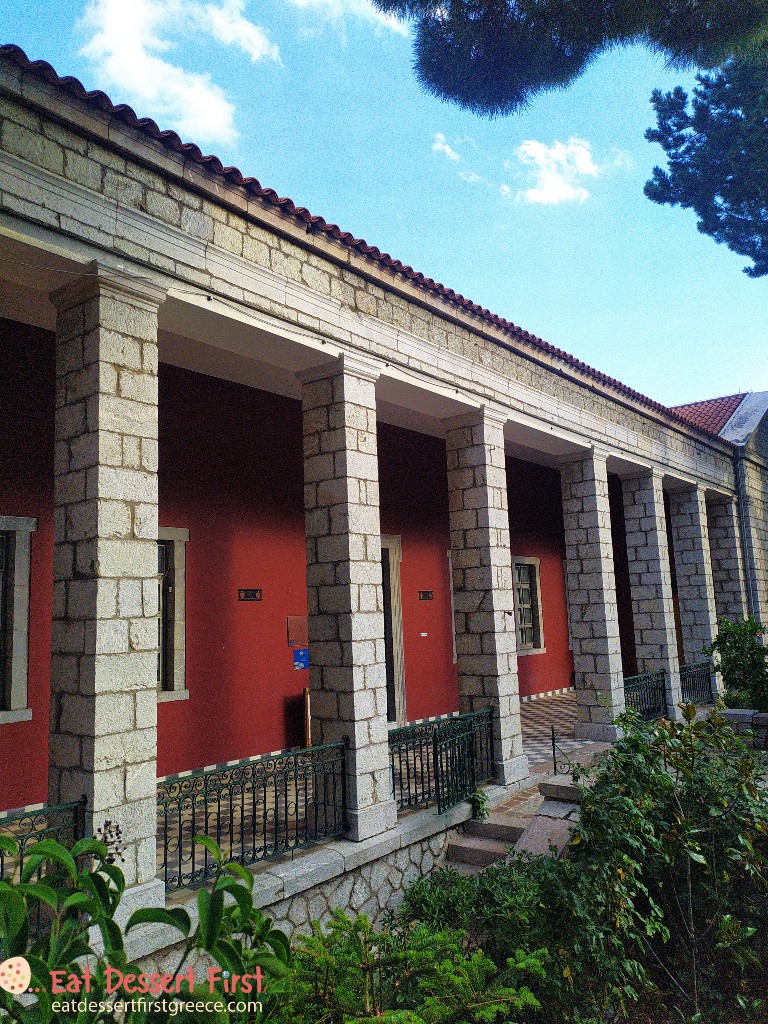
One of the most famous sights of Arachova is the Clock on the rock of Tyrias. After photographing it, we also learned its history: at the beginning of the 18th century it was part of the Metropolitan Church of the Assumption of the Virgin, which was destroyed by the earthquake of 1870. The clock was repaired and took the form it has today. It has also served as a natural refrigerator for the preservation of food and cheese, while during the Nazi Occupation it was a good hiding place of important objects of the inhabitants of the area.
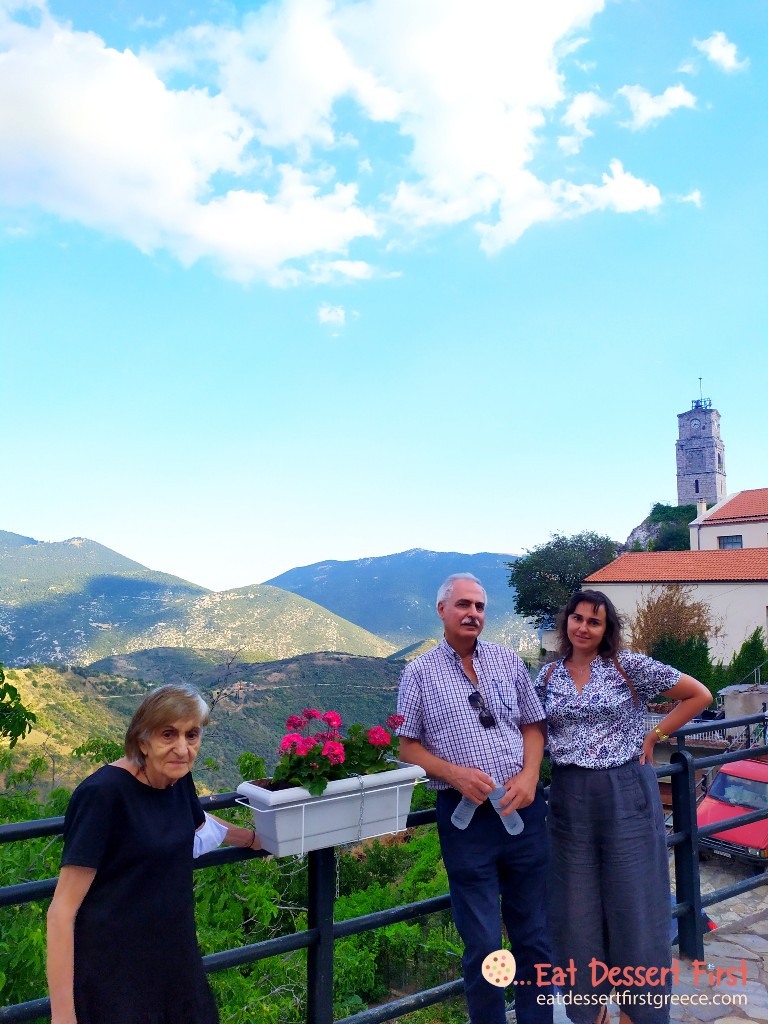


It was time to take the road back, where we would make one last stop to see and photograph the third historical monument of our trip. On the way to Livadia we met a large, imposing monument that lets no one pass indifferent. This is the Monument of the National Resistance, which is located in Karakolithos, Viotia. There we read that on April 25 and 26, 1944, 134 civilians were executed, in a passage on the road from Livadia to Arachova, where there was no settlement or village.
The idea for the creation of the monument belongs to the first elected Prefect of Boeotia, the late Giannis Stamoulis. At the beginning of his term and in parallel with the preparation of the now historic lawsuit of Distomo, he announced, at the expense of the Prefecture of Viotia, an artistic competition for the creation of a sculpture, entitled “Execution of 134 Patriots and National Resistance”. In this competition, the sculptor Angelika Korovesi-Kalantidou was distinguished and in 1995 she was assigned to perform the artwork.

The artwork is located on a highway and I wanted it to be able to “be read” from both the two opposite sides of traffic. I also wanted the visitor who stops and approaches to have another, third, direct, visual communication and that is why I chose to show the fighter so imposing and looking as if moving.
Angelika Korovesi-Kalantidou (source)

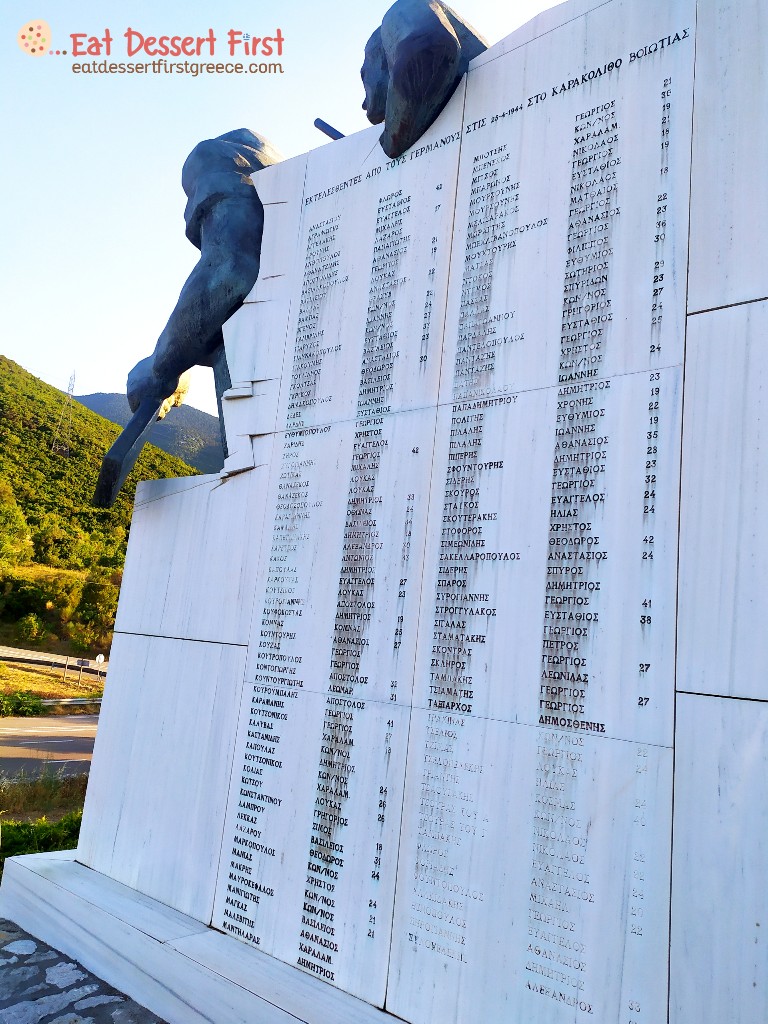

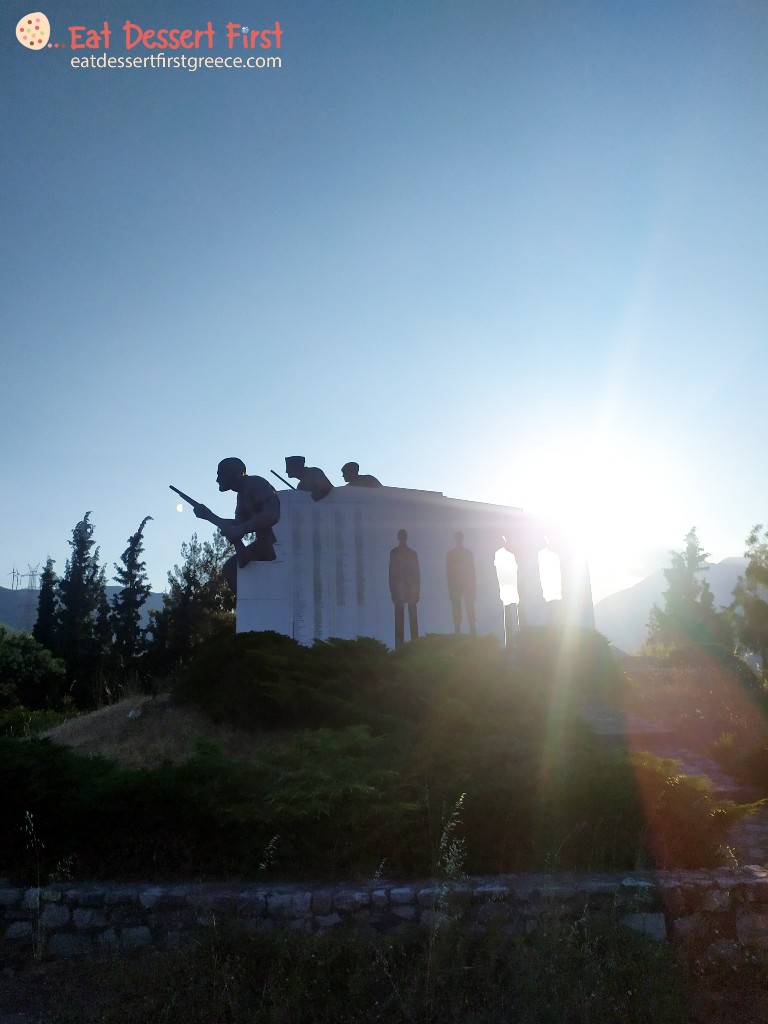
Having completed our journey into the history of Distomo, Arachova and the surrounding area, with strong images in our memory and moving thoughts in our mind, we took the road back. Until our next sweet trip…
Read first each of our new articles!
Find us on our social media:
- Instagram: @eatdessertfirstgreece
- Facebook profile: Giorgos Eliza Vlachakis
- Facebook page: eatdessertfirstgreece
- Twitter: @eatdessert1stGr
- Pinterest: eatdessert1stGr
- WordPress: Eat Dessert First Greece
- LinkedIn: Eliza Neofytou
- Reddit: eatdessertfirstgr
Follow us by filling in your email in the field at the bottom of our website, so that every new article will be emailed to you as soon as it is released. Do not forget to confirm your registration, in the email that will come to you! 🤗 Those of you who are wordpress bloggers, just click follow.


I grew up with stories about the German occupation of Greece, but I don’t remember hearing about Distomo. These are the sorts of things we need to remember, but that people are starting to forget, to everyone’s detriment. Thank you for sharing this.
LikeLiked by 1 person
Thank you so much dear Aspasia! Exactly, these are the sort of things we need to remember! Our best wishes! 🙏🙏🇬🇷🌹
LikeLiked by 1 person
♥
LikeLiked by 1 person